Goal 1: End poverty in all its forms everywhere
Goal 2: End hunger, achieve food security and improved nutrition and promote sustainable agriculture
Goal 3: Ensure healthy lives and promote well-being for all at all ages
Goal 4: Ensure inclusive and quality education for all and promote lifelong learning
Goal 5: Achieve gender equality and empower all women and girls
Goal 6: Ensure availability and sustainable management of water and sanitation for all
Goal 7: Ensure access to affordable, reliable, sustainable and modern energy for all
Goal 8: Promote sustained, inclusive and sustainable economic growth, full and productive employment and decent work for all
Goal 9: Build resilient infrastructure, promote inclusive and sustainable industrialization and foster innovation
Goal 10: Reduce inequality within and among countries
Goal 11: Make cities and human settlements inclusive, safe, resilient and sustainable
Goal 12: Ensure sustainable consumption and production patterns
Goal 13: Take urgent action to combat climate change and its impacts
Goal 14: Conserve and sustainably use the oceans, seas and marine resources for sustainable development
Goal 15: Protect, restore and promote sustainable use of terrestrial ecosystems, sustainably manage forests, combat desertification, and halt and reverse land degradation and halt biodiversity loss
Goal 16: Promote peaceful and inclusive societies for sustainable development, provide access to justice for all and build effective, accountable and inclusive institutions at all levels
Goal 17: Strengthen the means of implementation and revitalise the global partnership for sustainable development
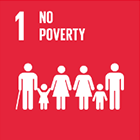
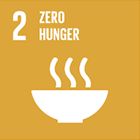
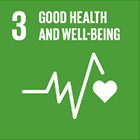
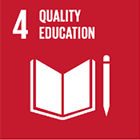
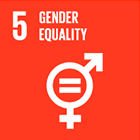
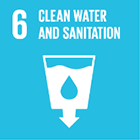
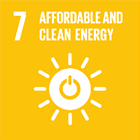
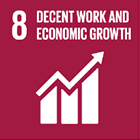
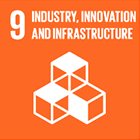
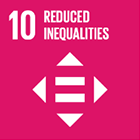
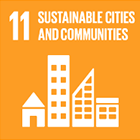
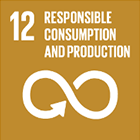
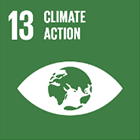
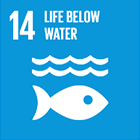
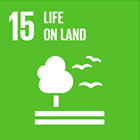
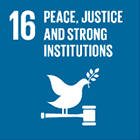
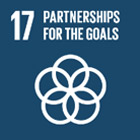
Target 1.4 By 2030, ensure that all men and women, in particular the poor and the vulnerable, have equal rights to economic resources, as well as access to basic services, ownership and control over land and other forms of property, inheritance, natural resources, appropriate new technology and financial services, including microfinanceBy 2030, ensure that all men and women, in particular the poor and the vulnerable, have equal rights to economic resources, as well as access to basic services, ownership and control over land and other forms of property, inheritance, natural resources, appropriate new technology and financial services, including microfinance.
RFO issues ensure the provision of basic services. HQM issues ensure the provision of basic services.
View indicators
Indicator 1.4.1 Proportion of population living in households with access to basic services Proportion of population living in households with access to basic services.
View 1.4.1 criteria
Target 1.5 By 2030, build the resilience of the poor and those in vulnerable situations and reduce their exposure and vulnerability to climate-related extreme events and other economic, social and environmental shocks and disasters.
RFO issues help to improve resilience to natural disasters and extreme weather.
View indicators
Indicator 1.5.1 Number of deaths, missing persons and directly affected persons attributed to disasters per 100,000 populationNumber of deaths, missing persons and directly affected persons attributed to disasters per 100,000 population.
View 1.5.1 criteria
Indicator 1.5.2 Direct economic loss attributed to disasters in relation to global gross domestic product (GDP).
RFO issues help to improve resilience to natural disasters and extreme weather.
View 1.5.2 criteria
Indicator 1.5.3 Number of countries that adopt and implement national disaster risk reduction strategies in line with the Sendai Framework for Disaster Risk Reduction 2015–2030.
RFO issues help to improve resilience to natural disasters and extreme weather.
View 1.5.3 criteria
Indicator 1.5.4 Proportion of local governments that adopt and implement local disaster risk reduction strategies in line with national disaster risk reduction strategies.
RFO issues help to improve resilience to natural disasters and extreme weather.
View 1.5.4 criteria
Target 2.4 By 2030, ensure sustainable food production systems and implement resilient agricultural practices that increase productivity and production, that help maintain ecosystems, that strengthen capacity for adaptation to climate change, extreme weather, drought, flooding and other disasters and that progressively improve land and soil quality.
The ecology issues within BREEAM maintain ecosystems and reduce land degradation in the surrounding area.
View indicators
Indicator 2.4.1 Proportion of agricultural area under productive and sustainable agriculture.
View 2.4.1 criteria
Target 3.4 By 2030, reduce by one third premature mortality from non-communicable diseases through prevention and treatment and promote mental health and well-being.
The health and wellbeing issues within RFO improve occupant health by ensuring a clean, healthy and reduced stress indoor environment
View indicators
Indicator 3.4.1 Mortality rate attributed to cardiovascular disease, cancer, diabetes or chronic respiratory disease.
View 3.4.1 criteria
Indicator 3.4.2 Suicide mortality rate.
These health and wellbeing issues within RFO can have a significant effect in the reduction of stress factors for an occupant within a building.
View 3.4.2 criteria
Target 3.6 By 2020, halve the number of global deaths and injuries from road traffic accidents.
RFO schemes promote safe access for all potential users as well as responsible construction practices with regards to transport.
View indicators
Indicator 3.6.1 Death rate due to road traffic injuries.
View 3.6.1 criteria
Target 3.9 By 2030, substantially reduce the number of deaths and illnesses from hazardous chemicals and air, water and soil pollution and contamination.
Surrounding and internal air quality during construction and operation are important issues within RFO.
View indicators
Indicator 3.9.1 Mortality rate attributed to household and ambient air pollution.
View 3.9.1 criteria
Indicator 3.9.2 Mortality rate attributed to unsafe water, unsafe sanitation and lack of hygiene (exposure to unsafe Water, Sanitation and Hygiene for All (WASH) services).
Provision of WASH services and access to clean, safe water are assessed within issues of RFO.
View 3.9.2 criteria
Indicator 3.9.3 Mortality rate attributed to unintentional poisoning.
Pollution control measures within RFO help to mitigate poisoning of surrounding watercourses
View 3.9.3 criteria
Target 4.a Build and upgrade education facilities that are child, disability and gender sensitive and provide safe, non-violent, inclusive and effective learning environments for all.
RFO ensures the provision of services like electricity, water and WASH facilities.
View indicators
Indicator 4.a.1 Proportion of schools with access to (a) electricity; (b) the Internet for pedagogical purposes; (c) computers for pedagogical purposes; (d) adapted infrastructure and materials for students with disabilities; (e) basic drinking water; (f) single-sex basic sanitation facilities; and (g) basic handwashing facilities (as per the WASH indicator definitions).
View 4.a.1 criteria
The Indicators for this goal are not influenced by the criteria from this scheme.
Target 6.1 By 2030, achieve universal and equitable access to safe and affordable drinking water for all.
RFO ensures the provision of water services and WASH facilities.
View indicators
Indicator 6.1.1 Proportion of population using safely managed drinking water services.
View 6.1.1 criteria
Target 6.2 By 2030, achieve access to adequate and equitable sanitation and hygiene for all and end open defecation, paying special attention to the needs of women and girls and those in vulnerable situations.
RFO ensures the provision of water services and WASH facilities.
View indicators
Indicator 6.2.1 Proportion of population using safely managed sanitation services, including a hand-washing facility with soap and water.
View 6.2.1 criteria
Target 6.3 By 2030, improve water quality by reducing pollution, eliminating dumping and minimizing release of hazardous chemicals and materials, halving the proportion of untreated wastewater and substantially increasing recycling and safe reuse globally.
Encourages the use of greywater to limit waste.
View indicators
Indicator 6.3.1 Proportion of wastewater safely treated.
View 6.3.1 criteria
Indicator 6.3.2 Proportion of bodies of water with good ambient water quality.
Control measures within RFO help to mitigate the pollution of surrounding watercourses.
View 6.3.2 criteria
Target 6.4 By 2030, substantially increase water-use efficiency across all sectors and ensure sustainable withdrawals and supply of freshwater to address water scarcity and substantially reduce the number of people suffering from water scarcity.
The water related issues within RFO work towards improving water-use efficiency of each project.
View indicators
Indicator 6.4.1 Change in water-use efficiency over time.
View 6.4.1 criteria
Indicator 6.4.2 Level of water stress: freshwater withdrawal as a proportion of available freshwater resources.
The water related issues within RFO work towards improving water-use efficiency of each project and relieving water-stress.
View 6.4.2 criteria
Target 6.5 By 2030, implement integrated water resources management at all levels, including through transboundary cooperation as appropriate.
The water issues within RFO aim for better resource management with regards to a building’s water use.
View indicators
Indicator 6.5.1 Degree of integrated water resources management implementation (0-100).
View 6.5.1 criteria
Target 6.6 By 2020, protect and restore water-related ecosystems, including mountains, forests, wetlands, rivers, aquifers and lakes.
Control measures within RFO help to mitigate the pollution of surrounding watercourses.
View indicators
Indicator 6.6.1 Change in the extent of water-related ecosystems over time.
View 6.6.1 criteria
Target 6.a By 2030, expand international cooperation and capacity-building support to developing countries in water- and sanitation-related activities and programmes, including water harvesting, desalination, water efficiency, wastewater treatment, recycling and reuse technologies.
RFO ensures the provision of water efficient measures and WASH facilities in developments.
View indicators
Indicator 6.a.1 Amount of water and sanitation-related official development assistance that is part of a government-coordinated spending plan.
View 6.a.1 criteria
Target 6.b Support and strengthen the participation of local communities in improving water and sanitation management.
RFO ensures the provision of water efficient measures and WASH facilities in developments.
View indicators
Indicator 6.b.1 Proportion of local administrative units with established and operational policies and procedures for participation of local communities in water and sanitation management.
View 6.b.1 criteria
Target 7.1 By 2030, ensure universal access to affordable, reliable and modern energy services.
Energy issues within RFO promote the implementation of efficient energy systems.
View indicators
Indicator 7.1.1 Proportion of population with access to electricity.
View 7.1.1 criteria
Indicator 7.1.2 Proportion of population with primary reliance on clean fuels and technology.
Specific Energy issues within RFO promote the implementation of Low to zero carbon technologies and efficient energy systems.
View 7.1.2 criteria
Target 7.2 By 2030, increase substantially the share of renewable energy in the global energy mix.
Specific Energy issues within RFO promote the implementation of Low to zero carbon technologies and efficient energy systems.
View indicators
Indicator 7.2.1 Renewable energy share in the total final energy consumption.
View 7.2.1 criteria
Target 7.3 By 2030, double the global rate of improvement in energy efficiency.
Energy issues within RFO promote the implementation of efficient energy systems.
View indicators
Indicator 7.3.1 Energy intensity measured in terms of primary energy and GDP.
View 7.3.1 criteria
Target 7.a By 2030, enhance international cooperation to facilitate access to clean energy research and technology, including renewable energy, energy efficiency and advanced and cleaner fossil-fuel technology, and promote investment in energy infrastructure and clean energy technology.
Energy issues within RFO promote the implementation of Low to zero carbon technologies and efficient energy systems.
View indicators
Indicator 7.a.1 International financial flows to developing countries in support of clean energy research and development and renewable energy production, including in hybrid systems.
View 7.a.1 criteria
Target 7.b By 2030, expand infrastructure and upgrade technology for supplying modern and sustainable energy services for all in developing countries, in particular least developed countries, small island developing States, and land-locked developing countries, in accordance with their respective programmes of support.
Energy issues within RFO promote the implementation of efficient energy systems.
View indicators
Indicator 7.b.1 Investments in energy efficiency as a percentage of GDP and the amount of foreign direct investment in financial transfer for infrastructure and technology to sustainable development services.
View 7.b.1 criteria
Target 8.3 Promote development-oriented policies that support productive activities, decent job creation, entrepreneurship, creativity and innovation, and encourage the formalization and growth of micro-, small- and medium-sized enterprises, including through access to financial services.
View indicators
Indicator: Indicators N/A.
View 8.3 criteria
Target 8.4 Improve progressively, through 2030, global resource efficiency in consumption and production and endeavour to decouple economic growth from environmental degradation, in accordance with the 10-year framework of programmes on sustainable consumption and production, with developed countries taking the lead.
RFO helps to reduce the built environment’s footprint with regards to raw materials.
View indicators
Indicator 8.4.1 Material footprint, material footprint per capita, and material footprint per GDP.
View 8.4.1 criteria
Indicator 8.4.2 Domestic material consumption, domestic material consumption per capita, and domestic material consumption per GDP.
RFO helps to reduce the built environment’s footprint with regards to raw materials.
View 8.4.2 criteria
Target 8.7 Take immediate and effective measures to eradicate forced labour, end modern slavery and human trafficking and secure the prohibition and elimination of the worst forms of child labour, including recruitment and use of child soldiers, and by 2025 end child labour in all its forms.
Responsible and sustainable sourcing helps to ensure materials are acquired from ethical and legal suppliers.
View indicators
Indicator 8.7.1 Proportion and number of children aged 5–17 years engaged in child labour, by sex and age.
View 8.7.1 criteria
Target 8.8 Protect labour rights and promote safe and secure working environments for all workers, including migrant workers, in particular women migrants, and those in precarious employment.
Monitoring Health and safety during construction.
View indicators
Indicator 8.8.1 Frequency rates of fatal and non-fatal occupational injuries, by sex and migrant status.
View 8.8.1 criteria
Indicator 8.8.2 Level of national compliance with labour rights (freedom of association and collective bargaining) based on International Labour Organization (ILO) textual sources and national legislation, by sex and migrant status.
Responsible and sustainable sourcing helps to ensure materials are acquired from ethical and legal suppliers.
View 8.8.2 criteria
Target 8.10 Strengthen the capacity of domestic financial institutions to encourage and expand access to banking, insurance and financial services for all.
Proximity to amenities including access to cash points is part of RFO.
View indicators
Indicator 8.10.1 Number of commercial bank branches and automated teller machines (ATMs) per 100,000 adults.
View 8.10.1 criteria
Target 9.1 Develop quality, reliable, sustainable and resilient infrastructure, including regional and transborder infrastructure, to support economic development and human well-being, with a focus on affordable and equitable access for all.
Transport sections of RFO ensure access to all season roads and public transport.
View indicators
Indicator 9.1.1 Proportion of the rural population who live within 2 km of an all-season road.
View 9.1.1 criteria
Indicator 9.1.2 Passenger and freight volumes, by mode of transport.
RFO travel plan involves looking at existing and future travel patterns for the site.
View 9.1.2 criteria
Target 9.4 By 2030, upgrade infrastructure and retrofit industries to make them sustainable, with increased resource-use efficiency and greater adoption of clean and environmentally sound technologies and industrial processes, with all countries taking action in accordance with their respective capabilities.
RFO promotes the reduction in CO2 equivalent emissions through sustainable construction practices and energy efficient buildings.
View indicators
Indicator 9.4.1 CO2 emission per unit of value added.
View 9.4.1 criteria
Target 9.5 Enhance scientific research, upgrade the technological capabilities of industrial sectors in all countries, in particular developing countries, including, by 2030, encouraging innovation and substantially increasing the number of research and development workers per 1 million people and public and private research and development spending.
RFO encourages innovation through the awarding of extra, innovation credits where applicable.
View indicators
Indicator: Indicators N/A.
View 9.5 criteria
Target 9.a Facilitate sustainable and resilient infrastructure development in developing countries through enhanced financial, technological and technical support to African countries, least developed countries, landlocked developing countries and small island developing States.
Transport sections of RFO ensure access to all season roads and public transport, while promoting sustainable travel plans where applicable.
View indicators
Indicator 9.a.1 Total official international support (official development assistance plus other official flows) to infrastructure.
View 9.a.1 criteria
The Indicators for this goal are not influenced by the criteria from this scheme.
Target 11.1 By 2030, ensure access for all to adequate, safe and affordable housing and basic services and upgrade slums.
RFO promotes access for occupants to efficient, basic services.
View indicators
Indicator 11.1.1 Proportion of urban population living in slums, informal settlements or inadequate housing.
View 11.1.1 criteria
Indicator 11.2.1 Proportion of population that has convenient access to public transport, by sex, age and persons with disabilities.
Transport sections of RFO ensure access to all season roads and public transport, while promoting sustainable travel plans where applicable.
View 11.2.1 criteria
11.3 By 2030, enhance inclusive and sustainable urbanization and capacity for participatory, integrated and sustainable human settlement planning and management in all countries.
View indicators
Indicator 11.3.1 Ratio of land consumption rate to population growth rate.
View 11.3.1 criteria
Indicator 11.3.2Proportion of cities with a direct participation structure of civil society in urban planning and management that operate regularly and democratically.
RFO helps to facilitate a move towards more sustainable urbanisation.
View 11.3.2 criteria
Target 11.5 By 2030, significantly reduce the number of deaths and the number of people affected and substantially decrease the direct economic losses relative to global gross domestic product caused by disasters, including water-related disasters, with a focus on protecting the poor and people in vulnerable situations.
RFO issues help to improve resilience to natural disasters and extreme weather.
View indicators
Indicator 11.5.1 Number of deaths, missing persons and directly affected persons attributed to disasters per 100,000 population.
View 11.5.1 criteria
Indicator 11.5.2 Direct economic loss in relation to global GDP, damage to critical infrastructure and number of disruptions to basic services, attributed to disasters.
RFO issues help to improve resilience to natural disasters and extreme weather.
View 11.5.2 criteria
Target 11.6 By 2030, reduce the adverse per capita environmental impact of cities, including by paying special attention to air quality and municipal and other waste management.
Construction and operational waste management is an important part of RFO.
View indicators
Indicator 11.6.1 Proportion of urban solid waste regularly collected and with adequate final discharge out of total urban solid waste generated, by cities.
View 11.6.1 criteria
Indicator 11.6.2 AnnualAnnual mean levels of fine particulate matter (e.g. PM2.5 and PM10) in cities (population weighted).
RFO criteria encourages the reduction of air pollution and the release of particulate matter.
View 11.6.2 criteria
Target 11.7 By 2030, provide universal access to safe, inclusive and accessible, green and public spaces, in particular for women and children, older persons and persons with disabilities.
RFO criteria promote the protection of biodiversity and the use of previously or occupied land to prevent further degradation of green public spaces. Access to necessary amenities is also a key part of the scheme.
View indicators
Indicator 11.7.1 Average share of the built-up area of cities that is open space for public use for all, by sex, age and persons with disabilities.
View 11.7.1 criteria
Target 11.a Support positive economic, social and environmental links between urban, peri-urban and rural areas by strengthening national and regional development planning.
RFO issues help to address the social, economic and environmental issues in urban and peri-urban areas and facilitates the management of resources within the built environment.
View indicators
Indicator 11.a.1 Proportion of population living in cities that implement urban and regional development plans integrating population projections and resource needs, by size of city.
View 11.a.1 criteria
Target 11.b By 2020, substantially increase the number of cities and human settlements adopting and implementing integrated policies and plans towards inclusion, resource efficiency, mitigation and adaptation to climate change, resilience to disasters, and develop and implement, in line with the Sendai Framework for Disaster Risk Reduction 2015-2030, holistic disaster risk management at all levels.
RFO issues help to improve resilience to natural disasters and extreme weather.
View indicators
Indicator 11.b.1 Proportion of local governments that adopt and implement local disaster risk reduction strategies in line with the Sendai Framework for Disaster Risk Reduction 2015-2030.
View 11.b.1 criteria
Target 11.c Support least developed countries, including through financial and technical assistance, in building sustainable and resilient buildings utilizing local materials.
RFO can facilitate the move towards construction of sustainable, resilient and resource-efficient buildings.
View indicators
Indicator 11.c.1 Proportion of financial support to the least developed countries that is allocated to the construction and retrofitting of sustainable, resilient and resource-efficient buildings utilizing local materials.
View 11.c.1 criteria
Target 12.1 Implement the 10-Year Framework of Programmes on Sustainable Consumption and Production Patterns, all countries taking action, with developed countries taking the lead, taking into account the development and capabilities of developing countries.
RFO promotes the efficient consumption of resources and raw materials through increased efficiency and alternative transport measures.
View indicators
Indicator 12.1.1 Number of countries with sustainable consumption and production (SCP) national action plans or SCP mainstreamed as a priority or a target into national policies.
View 12.1.1 criteria
12.2 By 2030, achieve the sustainable management and efficient use of natural resources.
RFO helps to reduce the built environment’s footprint with regards to raw materials.
View indicators
Indicator 12.2.1 Material footprint, material footprint per capita, and material footprint per GDP.
View 12.2.1 criteria
Indicator 12.2.2 Domestic material consumption, domestic material consumption per capita, and domestic material consumption per GDP.
RFO facilitates the responsible, efficient consumption of raw materials, with an aim to reduce the built environment’s footprint overall.
View 12.2.2 criteria
Target 12.4 By 2020, achieve the environmentally sound management of chemicals and all wastes throughout their life cycle, in accordance with agreed international frameworks, and significantly reduce their release to air, water and soil in order to minimize their adverse impacts on human health and the environment.
Responsible and sustainable management of hazardous and non-hazardous waste during construction and operation are key issues within RFO.
View indicators
Indicator 12.4.1 Number of parties to international multilateral environmental agreements on hazardous waste, and other chemicals that meet their commitments and obligations in transmitting information as required by each relevant agreement.
View 12.4.1 criteria
Indicator 12.4.2 Hazardous waste generated per capita and proportion of hazardous waste treated, by type of treatment.
Responsible and sustainable management of hazardous and non-hazardous waste during construction and operation are key issues within RFO.
View 12.4.2 criteria
Target 12.5 By 2030, substantially reduce waste generation through prevention, reduction, recycling and reuse.
Responsible and sustainable management of hazardous and non-hazardous waste during construction and operation are key issues within RFO.
View indicators
Indicator 12.5.1 National recycling rate, tons of material recycled.
View 12.5.1 criteria
Target 12.6 Encourage companies, especially large and transnational companies, to adopt sustainable practices and to integrate sustainability information into their reporting cycle.
Certain issues within RFO require the monitoring and constant reporting on particular areas within the scheme.
View indicators
Indicator 12.6.1 Number of companies publishing sustainability reports.
View 12.6.1 criteria
Target 12.7 Promote public procurement practices that are sustainable, in accordance with national policies and priorities.
Criteria within RFO require the responsible and sustainable procurement of timber and other construction products.
View indicators
Indicator 12.7.1 Number of countries implementing sustainable public procurement policies and action plans.
View 12.7.1 criteria
Target 12.a Support developing countries to strengthen their scientific and technological capacity to move towards more sustainable patterns of consumption and production.
RFO’s promotion of low and zero carbon technologies, energy efficient equipment and increased water use efficiency helps to strengthen a country’s capacity to move towards more sustainable patterns of consumption.
View indicators
Indicator 12.a.1 Amount of support to developing countries on research and development for sustainable consumption and production and environmentally sound technologies.
View 12.a.1 criteria
Target 13.1 Strengthen resilience and adaptive capacity to climate-related hazards and natural disasters in all countries.
BREEAM International RFO issues help to improve resilience to natural disasters and extreme weather.
View indicators
Indicator 13.1.1 Number of deaths, missing persons and persons affected by disaster per 100,000 people.
View 13.1.1 criteria
Indicator 13.1.2 Number of countries that adopt and implement national disaster risk reduction strategies in line with the Sendai Framework for Disaster Risk Reduction 2015–2031.
View 13.1.2 criteria
Indicator 13.1.3 Proportion of local governments that adopt and implement local disaster risk reduction strategies in line with national disaster risk reduction strategies.
RFO issues help to improve resilience to natural disasters and extreme weather.
View 13.1.3 criteria
13.2 Integrate climate change measures into national policies, strategies and planning.
RFO issues help to improve resilience to natural disasters and extreme weather and facilitate increasing a country’s adaptive capacity to such events. Certain issues also help to mitigate carbon equivalent emissions, through Low and zero carbon technologies and increased energy efficiency.
View indicators
Indicator 13.2.1 Number of countries that have communicated the establishment or operationalization of an integrated policy/strategy/plan which increases their ability to adapt to the adverse impacts of climate change, and foster climate resilience and low greenhouse gas emissions development in a manner that does not threaten food production (including a national adaptation plan, nationally determined contribution, national communication, biennial update report or other).
View 13.2.1 criteria
Target 13.3 Improve education, awareness-raising and human and institutional capacity on climate change mitigation, adaptation, impact reduction and early warning.
RFO issues help to improve resilience to natural disasters and extreme weather and facilitate increasing a country’s adaptive capacity to such events. Certain issues also help to mitigate carbon equivalent emissions, through Low and zero carbon technologies and increased energy efficiency.
View indicators
Indicator 13.3.2 Number of countries that have communicated the strengthening of institutional, systemic and individual capacity-building to implement adaptation, mitigation and technology transfer, and development actions.
View 13.3.2 criteria
Target 14.1 By 2025, prevent and significantly reduce marine pollution of all kinds, in particular from land-based activities, including marine debris and nutrient pollution.
Control measures within RFO help to mitigate the pollution of surrounding watercourses.
View indicators
Indicator 14.1.1 Index of coastal eutrophication and floating plastic debris density.
View 14.1.1 criteria
14.2 By 2020, sustainably manage and protect marine and coastal ecosystems to avoid significant adverse impacts, including by strengthening their resilience, and take action for their restoration in order to achieve healthy and productive oceans.
The ecology issues within BREEAM maintain ecosystems and reduce land degradation in the surrounding area.
View indicators
Indicator 14.2.1 Proportion of national exclusive economic zones managed using ecosystem-based approaches.
View 14.2.1 criteria
Target 14.3 Minimize and address the impacts of ocean acidification, including through enhanced scientific cooperation at all levels.
By promoting the reduction of greenhouse gas emissions, RFO can help to minimise the built environment’s contribution to increased marine acidification.
View indicators
Indicator 14.3.1 Average marine acidity (pH) measured at agreed suite of representative sampling stations.
View 14.3.1 criteria
Target 15.1 By 2020, ensure the conservation, restoration and sustainable use of terrestrial and inland freshwater ecosystems and their services, in particular forests, wetlands, mountains and drylands, in line with obligations under international agreements.
The ecology issues within BREEAM maintain ecosystems and reduce land degradation in the surrounding area, while the pollution measures help to minimise any pollution to surrounding watercourses.
View indicators
Indicator 15.1.2 Proportion of important sites for terrestrial and freshwater biodiversity that are covered by protected areas, by ecosystem type.
View 15.1.2 criteria
Target 15.2 By 2020, promote the implementation of sustainable management of all types of forests, halt deforestation, restore degraded forests and substantially increase afforestation and reforestation globally.
The responsible and sustainable procurement of timber and certain building materials will facilitate the progression towards sustainable forest management.
View indicators
Indicator 15.2.1 Progress towards sustainable forest management.
View 15.2.1 criteria
Target 15.3 By 2030, combat desertification, restore degraded land and soil, including land affected by desertification, drought and floods, and strive to achieve a land degradation-neutral world.
The ecology issues within BREEAM maintain ecosystems and reduce land degradation in the surrounding area with the pollution issues minimising any damage from pollution.
View indicators
Indicator 15.3.1 Proportion of land that is degraded over total land area.
View 15.3.1 criteria
Target 15.5 Take urgent and significant action to reduce the degradation of natural habitats, halt the loss of biodiversity and, by 2020, protect and prevent the extinction of threatened species.
The ecology issues within BREEAM protect and maintain ecosystems and reduce land degradation in the surrounding area.
View indicators
Indicator 15.5.1 Red List Index.
View 15.5.1 criteria
Target 15.9 By 2020, integrate ecosystem and biodiversity values into national and local planning, development processes, poverty reduction strategies and accounts.
View indicators
Indicator 15.9.1 Progress towards national targets established in accordance with Aichi Biodiversity Target 2 of the Strategic Plan for Biodiversity 2011–2020.
View 15.9.1 criteria
Target 16.2 End abuse, exploitation, trafficking and all forms of violence against and torture of children.
Responsible sourcing of timber and other materials can help to ensure they have been legally harvested and traded.
View indicators
Indicator 16.2.2 Number of victims of human trafficking per 100,000 population, by sex, age and form of exploitation.
View 16.2.2 criteria
Target 16.5 Substantially reduce corruption and bribery in all their forms.
Responsible sourcing of timber and other materials can help to ensure they have been legally harvested and traded.
View indicators
Indicator 16.5.1 Proportion of persons who had at least one contact with a public official and who paid a bribe to a public official, or were asked for a bribe by those public officials, during the previous 12 months.
View 16.5.1 criteria
Indicator 16.5.2 Proportion of businesses that had at least one contact with a public official and that paid a bribe to a public official, or were asked for a bribe by those public officials during the previous 12 months.
View 16.5.2 criteria
The Indicators for this goal are not influenced by the criteria from this scheme.
BREEAM RFO Criteria:
Ene 01.1 Energy performance.
Ene 01.2 Energy efficient design features.
Ene 02.1 Sub-metering of major energy-consuming systems.
Ene 02.2 Sub-metering of high energy load and tenancy areas.
Ene 04.1 Passive design analysis.
Ene 04.2 Free cooling.
Ene 04.3 LZCT feasibility.
Ene 09.1 Drying space both credits applicable.
Tra 01.1 Accessibility index.
Tra 01.2 Dedicated bus service.
Tra 02.1 Proximity to amenities criteria (located within proximity of 2 core amenities).
Tra 04.1 Car parking capacity.
Wat 01.1 Assessment of the buildings water efficiency.
Wat 02 Water monitoring.
Wat 03.1 Leak detection system.
Wat 03.2 Flow control devices.
Wat 04 Water efficient equipment.
UK
Tra 3.1 Cycle storage.
Tra 3.2 Cyclist facilities.
Tra 3.3 Cycle storage and cycle facilities.
BREEAM RFO Criteria:
Wst 05 Adaptation to CC – Structural and fabric resilience.
Wst 05.exp Responding to adaptation to climate change (requires achievement of other areas that promote resilience to climate change e.g. thermal comfort).
Hea 04.1 Thermal modelling – required for the second and third credit below.
Hea 04.2 Adaptability for a projected climate change scenario – Using passive and active design principles to show adaptability to extreme temperatures.
Hea 04.3 Thermal Zoning and controls – strategising the temp control within against the users and building use.
Hea 07.1 Hazards – Risk assessments and mitigation measures taken.
Mat 05.1 Protecting vulnerable parts of the building from damage/protecting exposed part of the building from material degradation.
Pol 03.1 Low flood risk – development in a low risk zone.
Pol 03.2 Medium or high flood risk – Flood risk assessment taken, and steps taken to increase resilience of the development.
Pol 03.3 Neutral impact on surface water.
Pol 03.4 Reducing Run off.
Pol 03.5 Minimising watercourse pollution.
Pol 03.6 Minimising watercourse pollution – water course pollution risk is assessed and addressed appropriately through separators or suitable containment.
Pol 03.exp There is no runoff discharged into watercourses and sewers.
BREEAM RFO Criteria:
Wst 05 Adaptation to CC – structural and fabric resilience.
Wst 05.exp Responding to adaptation to climate change (requires achievement of other areas that promote resilience to climate change e.g. thermal comfort.
Hea 07.1 Hazards – risk assessments and mitigation measures taken.
Mat 05.1 Protecting vulnerable parts of the building from damage/protecting exposed part of the building from material degradation.
Pol 03.1 Low flood risk – development in a low risk zone.
Pol 03.2 Medium or high flood risk – Flood risk assessment taken, and steps taken to increase resilience of the development.
Pol 03.3 Neutral impact on surface water.
Pol 03.4 Reducing Run off.
Pol 03.5 Minimising watercourse pollution.
Pol 03.6 Minimising watercourse pollution – water course pollution risk is assessed and addressed appropriately through separators or suitable containment.
Pol 03.exp There is no runoff discharged into watercourses and sewers.
BREEAM RFO Criteria:
Wst 05 Adaptation to CC – structural and fabric resilience.
Wst 05.exp Responding to adaptation to climate change (requires achievement of other areas that promote resilience to climate change e.g. thermal comfort.
Hea 07.1 Hazards – risk assessments and mitigation measures taken.
Mat 05.1 Protecting vulnerable parts of the building from damage/protecting exposed part of the building from material degradation.
Pol 03.1 Low flood risk – development in a low risk zone.
Pol 03.2 Medium or high flood risk – Flood risk assessment taken, and steps taken to increase resilience of the development.
Pol 03.3 Neutral impact on surface water.
Pol 03.4 Reducing Run off.
Pol 03.5 Minimising watercourse pollution.
Pol 03.6 Minimising watercourse pollution – water course pollution risk is assessed and addressed appropriately through separators or suitable containment.
Pol 03.exp There is no runoff discharged into watercourses and sewers.
BREEAM RFO Criteria:
Wst 05 Adaptation to CC – Structural and fabric resilience.
Wst 05.exp Responding to adaptation to climate change (requires achievement of other areas that promote resilience to climate change e.g. thermal comfort).
Hea 04.1 Thermal modelling – required for the second and third credit below.
Hea 04.2 Adaptability for a projected climate change scenario – Using passive and active design principles to show adaptability to extreme temperatures.
Hea 04.3 Thermal Zoning and controls – strategising the temp control within against the users and building use.
Hea 07.1 Hazards – Risk assessments and mitigation measures taken.
Mat 05.1 Protecting vulnerable parts of the building from damage/protecting exposed part of the building from material degradation.
Pol 03.1 Low flood risk – development in a low risk zone.
Pol 03.2 Medium or high flood risk – Flood risk assessment taken, and steps taken to increase resilience of the development.
Pol 03.3 Surface water Run-off – 1st credit – ensuring relevant drainage systems are in place with calculations for the allowance of CC. 2nd credit – flooding will not occur due to drainage failure and the relevant techniques are in place with justification.
Pol 03.4 Decrease in impermeable area by 50% or source control methods are in place to handle new run-off areas.
Pol 03.5 No increase in impermeable surfaces or if present, hard standing areas provided with SuDS.
BREEAM RFO Criteria:
LE 02.1 Protection of ecological features.
LE 04.1 Ecologists report and recommendation – SQE carries out and provides an assessment report, with at least 50% of the ecologist’s findings being brought to the final design and build.
LE 05 Long term impact on biodiversity – SQE ensures the meeting of all regulations. Landscape &habitat plans are in place. (appropriate to the site) with additional measures.
BREEAM RFO Criteria:
Hea 02.1 prerequisite – Ban on asbestos products.
Hea 02.2 IAQ plan has been produced (considering: removal of contaminants, dilution and control of contaminants, procedures for pre-occupancy etc).
Hea 02.3 Ventilation – suitable fresh air intakes. Intakes on building sides that minimise pollution coming in from outside.
Suitable filtration in HVAC systems, air quality sensors present.
Hea 02.4 Emissions from building products.
Hea 02.5 Post-construction indoor air quality measurement – measurement of formaldehyde, VOC levels ensuring they do not exceed limits.
Hea 02.6 Potential for natural ventilation – openable widow areas, ensuring cross flow of air. User control on the supply of fresh air.
Hea 04.1 Thermal modelling – required for the second and third credit below.
Hea 04.2 Adaptability for a projected climate change scenario – Using passive and active design principles to show adaptability to extreme temperatures.
Hea 04.3 Thermal Zoning and controls – strategising the temp control within against the users and building use.
Hea 05 prerequisite – Suitably qualified Acoustician is appointed at the appropriate stage.
Hea 05.1 Indoor ambient noise and sound insulation.
Hea 05.2 Reverberation times.
Hea 05.3 Acoustic performance standards in residential/long term residential institutions (up to 4 credits).
Prevention of mould growth through wat. 03:.
Wat 03.1 A programmable and sophisticated leak detection system in place.
Wat 03.2 Flow control devices – regulate supply of water to each WC area.
Wat 03.3 Leak Isolation – isolation valves are present to separately isolate different supplies within residential buildings.
Pol 02. Use of low emission heat sources in the building to control the NOx levels within.
Pol 05.1 Reducing the likelihood of noise arising from fixed installations.
BREEAM RFO Criteria:
Hea 02.1 prerequisite – Ban on asbestos products.
Hea 02.2 IAQ plan has been produced (considering: removal of contaminants, dilution and control of contaminants, procedures for pre-occupancy etc).
Hea 02.3 Ventilation – suitable fresh air intakes. Intakes on building sides that minimise pollution coming in from outside.
Suitable filtration in HVAC systems, air quality sensors present.
Hea 02.4 Emissions from building products.
Hea 02.5 Post-construction indoor air quality measurement – measurement of formaldehyde, VOC levels ensuring they do not exceed limits.
Hea 02.6 Potential for natural ventilation – openable widow areas, ensuring cross flow of air. User control on the supply of fresh air.
Hea 04.1 Thermal modelling – required for the second and third credit below.
Hea 04.2 Adaptability for a projected climate change scenario – Using passive and active design principles to show adaptability to extreme temperatures.
Hea 04.3 Thermal Zoning and controls – strategising the temp control within against the users and building use.
Hea 05 prerequisite – Suitably qualified Acoustician is appointed at the appropriate stage.
Hea 05.1 Indoor ambient noise and sound insulation.
Hea 05.2 Reverberation times.
Hea 05.3 Acoustic performance standards in residential/long term residential institutions (up to 4 credits).
BREEAM RFO Criteria:
Man 03.6 Second monitoring credit – responsibility has been assigned for monitoring…transport data. Monitoring transport movements and impacts resulting from delivery of the majority construction materials to site and construction waste. – responsible practices with regards to transport.
BREEAM RFO Criteria:
Hea 02.1 prerequisite- Ban on asbestos products.
Hea 02.2 IAQ plan has been produced (considering: removal of contaminants, dilution and control of contaminants, procedures for pre-occupancy etc).
Hea 02.3 Ventilation – suitable fresh air intakes. Intakes on building sides that minimise pollution coming in from outside.
Suitable filtration in HVAC systems, air quality sensors present.
Hea 02.4 Emissions from building products.
Hea 02.5 Post-construction indoor air quality measurement – measurement of formaldehyde, VOC levels ensuring they do not exceed limits.
Hea 02.6 Potential for natural ventilation – openable widow areas, ensuring cross flow of air. User control on the supply of fresh air.
Pol 02. Use of low emission heat sources in the building to control the NOx levels within.
Leads to better ambient air quality through reduction in fossil fuel use:.
Tra 01.1 Accessibility index.
Tra 01.2 Alternative transport measures.
Tra 02.1 Proximity to amenities criteria (located within proximity of 2 core amenities).
Tra 04.1 Car parking capacity.
Tra 05 Travel plan – Site specific travel assessment or statement has been undertaken – Reduction in reliance on modes with high environmental impact.
UK
Tra 3.1 Cycle storage.
Tra 3.2 Cyclist facilities.
Tra 3.3 Cycle storage and cycle facilities.
BREEAM RFO Criteria:
Minimum components for wat 01 are all safe water, sanitation and hygiene related (UK). Water efficiency tested using the calculator of WASH services, domestic or commercially sized.
Wat 02 Water metering and submetering to monitor consumption.
Wat 03.1 A programmable and sophisticated leak detection system in place.
Wat 03.2 Flow control devices – regulate supply of water to each WC area.
Wat 04 Water efficient equipment – systems in place to reduce water demand and demonstrate a meaningful reduction in total demand.
BREEAM RFO Criteria:
Pol 01 (all credits) No refrigerant use.
Pol 01 prerequisite – Compliance with institute of refrigeration ammonia refrigeration systems code of practice.
Pol 01.4 Leak detection – built in leak detection and capability of automatically isolating and containing the remaining refrigerant.
Pol 03.3 Neutral impact on surface water.
Pol 03.4 Reducing Run off.
Pol 03.5 Minimising watercourse pollution.
Pol 03.6 Minimising watercourse pollution – water course pollution risk is assessed and addressed appropriately through separators or suitable containment.
Pol 03.exp There is no runoff discharged into watercourses and sewers.
Man 03.1 Environmental management – environmental management system covering main operations in place with best practice pollutions control policies.
BREEAM RFO Criteria:
Ene 01.2 Energy efficient design features.
Ene 02.1 Sub-metering of major energy-consuming systems.
Ene 02.2 Sub-metering of high energy load and tenancy areas.
Ene 04.1 Passive design analysis.
Ene 04.2 Free cooling.
Ene 04.3 LZCT feasibility.
Minimum components for wat 01 are all safe water, sanitation and hygiene related (UK). Water efficiency tested using the calculator of WASH services, domestic or commercially sized.
Wat 02 Water metering and submetering to monitor consumption.
Wat 03.1 A programmable and sophisticated leak detection system in place.
Wat 03.2 Flow control devices – regulate supply of water to each WC area.
Wat 04 Water efficient equipment – systems in place to reduce water demand and demonstrate a meaningful reduction in total demand.
BREEAM RFO Criteria:
Minimum components for wat 01 are all safe water, sanitation and hygiene related (UK). Water efficiency tested using the calculator of WASH services, domestic or commercially sized.
Wat 02 Water metering and submetering to monitor consumption.
Wat 03.1 A programmable and sophisticated leak detection system in place.
Wat 03.2 Flow control devices – regulate supply of water to each WC area.
Wat 03.3 Leak Isolation – Isolation valves are present to separately isolate different supplies within residential buildings.
Wat 04 Water efficient equipment – systems in place to reduce water demand and demonstrate a meaningful reduction in total demand.
Reduction in the use of potable water.
Similar to HQM – Efficient measures put in place may indirectly affect the future access to safe and affordable drinking water for all.
BREEAM RFO Criteria:
Minimum components for wat 01 are all safe water, sanitation and hygiene related (UK). Water efficiency tested using the calculator of WASH services, domestic or commercially sized.
Wat 02 Water metering and submetering to monitor consumption.
Wat 03.1 A programmable and sophisticated leak detection system in place.
Wat 03.2 Flow control devices – regulate supply of water to each WC area.
Wat 03.3 Leak Isolation – isolation valves are present to separately isolate different supplies within residential buildings.
Wat 04 Water efficient equipment – systems in place to reduce water demand and demonstrate a meaningful reduction in total demand.
Reduction in the use of potable water.
Similar to HQM – Efficient measures put in place may indirectly affect the future access to safe and affordable drinking water for all.
BREEAM RFO Criteria:
Wat 01.1 (criteria number 4) Greywater or rainwater system is specified – use of non-potable water for features that usually use potable water.
Wat 01.2 (criteria number 5) Greywater systems specified and installed.
Wat 04 Water efficient equipment – encouraging the reuse of non-potable water, reduction in the use of potable water in unnecessary areas.
BREEAM RFO Criteria:
Pol 03.3 Neutral impact on surface water.
Pol 03.4 Reducing Run off.
Pol 03.5 Minimising watercourse pollution.
Pol 03.6 Minimising watercourse pollution – water course pollution risk is assessed and addressed appropriately through separators or suitable containment.
Pol 03.exp There is no runoff discharged into watercourses and sewers.
Man 03.1 Environmental management – best practice with regards to management of pollution coming from site.
BREEAM RFO Criteria:
Minimum components for wat 01 are all safe water, sanitation and hygiene related (UK). Water efficiency tested using the calculator of WASH services, domestic or commercially sized.
Wat 02 Water metering and submetering to monitor consumption.
Wat 03.1 A programmable and sophisticated leak detection system in place.
Wat 03.2 Flow control devices – regulate supply of water to each WC area.
Wat 04 Water efficient equipment – systems in place to reduce water demand and demonstrate a meaningful reduction in total demand.
Reduction in the use of potable water.
Man 03.4 Water consumption credit – responsibility has been assigned for the management of water use on site.
BREEAM RFO Criteria:
Minimum components for wat 01 are all safe water, sanitation and hygiene related (UK). Water efficiency tested using the calculator of WASH services, domestic or commercially sized.
Wat 02 Water metering and submetering to monitor consumption.
Wat 03.1 A programmable and sophisticated leak detection system in place.
Wat 03.2 Flow control devices – regulate supply of water to each WC area.
Wat 04 Water efficient equipment – systems in place to reduce water demand and demonstrate a meaningful reduction in total demand.
Reduction in the use of potable water.
Man 03.4 Water consumption credit – responsibility has been assigned for the management of water use on site.
BREEAM RFO Criteria:
Minimum components for wat 01 are all safe water, sanitation and hygiene related (UK). Water efficiency tested using the calculator of WASH services, domestic or commercially sized.
Wat 02 Water metering and submetering to monitor consumption.
Wat 03.1 A programmable and sophisticated leak detection system in place.
Wat 03.2 Flow control devices – regulate supply of water to each WC area.
Wat 04 Water efficient equipment – systems in place to reduce water demand and demonstrate a meaningful reduction in total demand.
Reduction in the use of potable water.
Man 03.4 Water consumption credit – responsibility has been assigned for the management of water use on site.
BREEAM RFO Criteria:
Pol 03.3 Neutral impact on surface water.
Pol 03.4 Reducing Run off.
Pol 03.5 Minimising watercourse pollution.
Pol 03.6 Minimising watercourse pollution – water course pollution risk is assessed and addressed appropriately through separators or suitable containment.
Pol 03.exp There is no runoff discharged into watercourses and sewers.
LE 02.1 Protection of ecological features.
LE 04.1 Ecologists report and recommendation – SQE carries out and provides an assessment report, with at least 50% of the ecologist’s findings being brought to the final design and build.
LE 05 Long term impact on biodiversity – SQE ensures the meeting of all regulations. Landscape &habitat plans are in place. (appropriate to the site) with additional measures.
Man 03.1 Environmental management – best practice with regards to management of pollution coming from site.
BREEAM RFO Criteria:
Minimum components for wat 01 are all safe water, sanitation and hygiene related (UK). Water efficiency tested using the calculator of WASH services, domestic or commercially sized.
Wat 02 Water metering and submetering to monitor consumption.
Wat 03.1 A programmable and sophisticated leak detection system in place.
Wat 03.2 Flow control devices – regulate supply of water to each WC area.
Wat 04 Water efficient equipment – systems in place to reduce water demand and demonstrate a meaningful reduction in total demand.
Reduction in the use of potable water:
Man 03.4 Water consumption credit – responsibility has been assigned for the management of water use on site.
BREEAM RFO Criteria:
Minimum components for wat 01 are all safe water, sanitation and hygiene related (UK). Water efficiency tested using the calculator of WASH services, domestic or commercially sized.
Wat 02 Water metering and submetering to monitor consumption.
Wat 03.1 A programmable and sophisticated leak detection system in place.
Wat 03.2 Flow control devices – regulate supply of water to each WC area.
Wat 04 Water efficient equipment – systems in place to reduce water demand and demonstrate a meaningful reduction in total demand.
Reduction in the use of potable water:
Man 03.4 Water consumption credit – responsibility has been assigned for the management of water use on site.
BREEAM RFO Criteria:
Ene 04 Low carbon design – promotion of low carbon designs – low and zero carbon technology.
Ene 01.1 Elemental energy model.
Ene 01.2 Historic buildings only – Specialist study.
Ene 01.exp.1 Zero net CO2 emissions.
Ene 01.exp.2 Carbon neutral.
Ene 02.1 Sub-metering of major energy-consuming systems.
Ene 02.2 Sub-metering of high energy load and tenancy areas.
Ene 04.1 Passive design analysis.
Ene 04.2 Free cooling.
Ene 04.3 LZCT feasibility.
Ene 04.4 LZC tech specification and installation.
Ene 05.1 Energy efficient design, installation and commissioning (cold storage).
Ene 05.2 Energy efficiency criteria – use of robust and tested components.
Ene 05.3 Indirect GHG emissions – savings in indirect GHG emissions.
Ene 06.1 Energy consumption (Transport) – efficiency of transport systems within the building (e.g. escalators/lifts etc.).
Ene 06.2 Energy efficient features – lifts and escalators.
Ene 08 Energy efficient equipment – reducing the equipment energy use within the building.
Ene 09.1 Drying space both credits applicable.
Pol 02 Use of low emission heat sources in the building to control the NOx levels within.
BREEAM RFO Criteria:
Ene 04 Low carbon design – promotion of low carbon designs – low and zero carbon technology.
Ene 01.1 Elemental energy model.
Ene 01.2 Historic buildings only – Specialist study.
Ene 01.exp.1 Zero net CO2 emissions.
Ene 01.exp.2 Carbon neutral.
Ene 02.1 Sub-metering of major energy-consuming systems.
Ene 02.2 Sub-metering of high energy load and tenancy areas.
Ene 04.1 Passive design analysis.
Ene 04.2 Free cooling.
Ene 04.3 LZCT feasibility.
Ene 04.4 LZC tech specification and installation.
Ene 05.1 Energy efficient design, installation and commissioning (cold storage).
Ene 05.2 Energy efficiency criteria – use of robust and tested components.
Ene 05.3 Indirect GHG emissions – savings in indirect GHG emissions.
Ene 06.1 Energy consumption (Transport) – efficiency of transport systems within the building (e.g. escalators/lifts etc.).
Ene 06.2 Energy efficient features – lifts and escalators.
Ene 08 Energy efficient equipment – reducing the equipment energy use within the building.
Ene 09.1 Drying space both credits applicable.
Pol 02 Use of low emission heat sources in the building to control the NOx levels within.
BREEAM RFO Criteria:
Ene 04 Low carbon design – promotion of low carbon designs – low and zero carbon technology.
Ene 01.1 Elemental energy model.
Ene 01.2 Historic buildings only – Specialist study.
Ene 01.exp.1 Zero net CO2 emissions.
Ene 01.exp.2 Carbon neutral.
Ene 02.1 Sub-metering of major energy-consuming systems.
Ene 02.2 Sub-metering of high energy load and tenancy areas.
Ene 04.1 Passive design analysis.
Ene 04.2 Free cooling.
Ene 04.3 LZCT feasibility.
Ene 04.4 LZC tech specification and installation.
Ene 05.1 Energy efficient design, installation and commissioning (cold storage).
Ene 05.2 Energy efficiency criteria – use of robust and tested components.
Ene 05.3 Indirect GHG emissions – savings in indirect GHG emissions.
Ene 06.1 Energy consumption (Transport) – efficiency of transport systems within the building (e.g. escalators/lifts etc.).
Ene 06.2 Energy efficient features – lifts and escalators.
Ene 08 Energy efficient equipment – reducing the equipment energy use within the building.
Ene 09.1 Drying space both credits applicable.
Pol 02 Use of low emission heat sources in the building to control the NOx levels within.
BREEAM RFO Criteria:
Ene 04 Low carbon design – promotion of low carbon designs – low and zero carbon technology.
Ene 01.1 Elemental energy model.
Ene 01.2 Historic buildings only – Specialist study.
Ene 01.exp.1 Zero net CO2 emissions.
Ene 01.exp.2 Carbon neutral.
Ene 02.1 Sub-metering of major energy-consuming systems.
Ene 02.2 Sub-metering of high energy load and tenancy areas.
Ene 04.1 Passive design analysis.
Ene 04.2 Free cooling.
Ene 04.3 LZCT feasibility.
Ene 04.4 LZC tech specification and installation.
Ene 05.1 Energy efficient design, installation and commissioning (cold storage).
Ene 05.2 Energy efficiency criteria – use of robust and tested components.
Ene 05.3 Indirect GHG emissions – savings in indirect GHG emissions.
Ene 06.1 Energy consumption (Transport) – efficiency of transport systems within the building (e.g. escalators/lifts etc.).
Ene 06.2 Energy efficient features – lifts and escalators.
Ene 08 Energy efficient equipment – reducing the equipment energy use within the building.
Ene 09.1 Drying space both credits applicable.
Pol 02. Use of low emission heat sources in the building to control the NOx levels within.
BREEAM RFO Criteria:
Ene 04 Low carbon design – promotion of low carbon designs – low and zero carbon technology.
Ene 01.1 Elemental energy model.
Ene 01.2 Historic buildings only – Specialist study.
Ene 01.exp.1 Zero net CO2 emissions.
Ene 01.exp.2 Carbon neutral.
Ene 02.1 Sub-metering of major energy-consuming systems.
Ene 02.2 Sub-metering of high energy load and tenancy areas.
Ene 04.1 Passive design analysis.
Ene 04.2 Free cooling.
Ene 04.3 LZCT feasibility.
Ene 04.4 LZC tech specification and installation.
Ene 05.1 Energy efficient design, installation and commissioning (cold storage).
Ene 05.2 Energy efficiency criteria – use of robust and tested components.
Ene 05.3 Indirect GHG emissions – savings in indirect GHG emissions.
Ene 06.1 Energy consumption (Transport) – efficiency of transport systems within the building (e.g. escalators/lifts etc.).
Ene06.2 Energy efficient features – lifts and escalators.
Ene 08 Energy efficient equipment – reducing the equipment energy use within the building.
Ene 09.1 Drying space both credits applicable.
Pol 02. Use of low emission heat sources in the building to control the NOx levels within.
BREEAM RFO Criteria:
Ene 04 Low carbon design – promotion of low carbon designs – low and zero carbon technology.
Ene 01.1 Elemental energy model.
Ene 01.2 Historic buildings only – Specialist study.
Ene 01.exp.1 Zero net CO2 emissions.
Ene 01.exp.2 Carbon neutral.
Ene 02.1 Sub-metering of major energy-consuming systems.
Ene 02.2 Sub-metering of high energy load and tenancy areas.
Ene 04.1 Passive design analysis.
Ene 04.2 Free cooling.
Ene 04.3 LZCT feasibility.
Ene 04.4 LZC tech specification and installation.
Ene 05.1 Energy efficient design, installation and commissioning (cold storage).
Ene 05.2 Energy efficiency criteria – use of robust and tested components.
Ene 05.3 Indirect GHG emissions – savings in indirect GHG emissions.
Ene 06.1 Energy consumption (Transport) – efficiency of transport systems within the building (e.g. escalators/lifts etc.).
Ene 06.2 Energy efficient features – lifts and escalators.
Ene 08 Energy efficient equipment – reducing the equipment energy use within the building.
Ene 09.1 Dying space both credits applicable.
Pol 02. Use of low emission heat sources in the building to control the NOx levels within.
BREEAM RFO Criteria:
Not applicable to RFO.
BREEAM RFO Criteria:
Mat 01.1 BREEAM based calculator using a LCA for the buildings life cycle impacts.
Mat 01.2 Elemental assessment of environmental performance information.
Mat 03.prerequisite – All timber and timber based products used legally harvested &a,p; traded.
Mat 03.1 Sustainable procurement plan – encouragement of the responsible sourcing of products.
Mat 03.2 Responsible sourcing of construction products receives credits with regards to the responsible sourcing table in the manual.
Wat 03.exp Where 70% of the available RSM points are achieved.
Mat 05.1 Protecting vulnerable parts of the building from damage/protecting exposed part of the building from material degradation.
Mat 06 Material efficiency – Optimising the use f materials.
Wst 01.1 Pre-refurbishment audit.
Wst 1.2 Reuse and direct recycling of materials.
Wst 1.3 Resource efficiency.
Wst 1.4 Diversion of resources from landfill.
Wst 1.exp Where non-hazardous and hazardous waste meet the resource efficiency targets.
Wst 02.1 Recycled aggregates – use of recycled material, with an exemplary credit for 50% + used on site.
Wst 02.exp Total recycled aggregate used > 50%
Wst 03a Dedicated space for segregation and storage of operational waste with the use of compactors/balers when necessary etc.
Wst 04.1 Speculative finishes – encourage the specification and fitting of finishes to avoid unnecessary waste of materials.
Wst 05 Adaptation to CC – Structural and fabric resilience.
Wst 05.exp Responding to adaptation to climate change (requires achievement of other areas that promote resilience to climate change e.g. thermal comfort.
Ene 01 Reduction in energy use and carbon emissions.
Mat 01/02 Monitoring the environmental impact of materials.
Ene 01.1 Elemental energy model.
Ene 01.2 Historic buildings only – specialist study.
Ene 01.exp.1 Zero net CO2 emissions.
Ene 01.exp.2 Carbon neutral.
Ene 02.1 Sub-metering of major energy-consuming systems.
Ene 02.2 Sub-metering of high energy load and tenancy areas.
Ene 04.1 Passive design analysis.
Ene 04.2 Free cooling.
Ene 04.3 LZCT feasibility.
Ene 04.4 LZC tech specification and installation.
Ene 05.1 Energy efficient design, installation and commissioning (cold storage).
Ene 05.2 Energy efficiency criteria – use of robust and tested components.
Ene 05.3 Indirect GHG emissions – savings in indirect GHG emissions.
Ene 06.1 Energy consumption (Transport) – efficiency of transport systems within the building (e.g. escalators/lifts etc.).
Ene 06.2 Energy efficient features – lifts and escalators.
Ene 08 Energy efficient equipment – reducing the equipment energy use within the building.
Ene 09.1 Dying space both credits applicable.
Wat 01 Minimum components for wat 01 are all safe water, sanitation and hygiene related (UK). Water efficiency tested using the calculator of WASH services, domestic or commercially sized.
Wat 02 Water metering and submetering to monitor consumption.
Wat 03.1 A programmable and sophisticated leak detection system in place.
Wat 03.2 Flow control devices – regulate supply of water to each WC area.
Wat 04 Water efficient equipment – systems in place to reduce water demand and demonstrate a meaningful reduction in total demand.
Reduction in the use of potable water:
Man 03.4 Water consumption credit – responsibility has been assigned for the management of water use on site.
BREEAM RFO Criteria:
Mat 01.1 BREEAM based calculator using a LCA for the buildings life cycle impacts.
Mat 01.2 Elemental assessment of environmental performance information.
Mat 03.prerequisite – All timber and timber based products used legally harvested & traded.
Mat 03.1 Sustainable procurement plan – encouragement of the responsible sourcing of products.
Mat 03.2 Responsible sourcing of construction products receives credits with regards to the responsible sourcing table in the manual.
Wat 03.exp Where 70% of the available RSM points are achieved.
Mat 05.1 Protecting vulnerable parts of the building from damage/protecting exposed part of the building from material degradation.
Mat 06 Material efficiency – optimising the use f materials.
Wst 01.1 Pre-refurbishment audit.
Wst 1.2 Reuse and direct recycling of materials.
Wst 1.3 Resource efficiency.
Wst 1.4 Diversion of resources from landfill.
Wst 1.exp Where non-hazardous and hazardous waste meet the resource efficiency targets.
Wst 02.1 Recycled aggregates – use of recycled material, with an exemplary credit for 50% + used on site.
Wst 02.exp Total recycled aggregate used > 50%
Wst 03a Dedicated space for segregation and storage of operational waste with the use of compactors/balers when necessary etc.
Wst 04.1 Speculative finishes – encourage the specification and fitting of finishes to avoid unnecessary waste of materials.
Wst 05 Adaptation to CC – Structural and fabric resilience.
Wst 05.exp Responding to adaptation to climate change (requires achievement of other areas that promote resilience to climate change e.g. thermal comfort.
Ene 01 Reduction in energy use and carbon emissions.
Mat 01/02 Monitoring the environmental impact of materials.
Ene 01.1 Elemental energy model.
Ene 01.2 Historic buildings only – Specialist study.
Ene 01.exp.1 Zero net CO2 emissions.
Ene 01.exp.2 Carbon neutral.
Ene 02.1 Sub-metering of major energy-consuming systems.
Ene 02.2 Sub-metering of high energy load and tenancy areas.
Ene 04.1 Passive design analysis.
Ene 04.2 Free cooling.
Ene 04.3 LZCT feasibility.
Ene 04.4 LZC tech specification and installation.
Ene 05.1 Energy efficient design, installation and commissioning (cold storage).
Ene 05.2 Energy efficiency criteria – use of robust and tested components.
Ene 05.3 Indirect GHG emissions – savings in indirect GHG emissions.
Ene 06.1 Energy consumption (Transport) – efficiency of transport systems within the building (e.g. escalators/lifts etc.).
Ene 06.2 Energy efficient features – lifts and escalators.
Ene 08 Energy efficient equipment – reducing the equipment energy use within the building.
Ene 09.1 Dying space both credits applicable.
Wat 01 Minimum components for wat 01 are all safe water, sanitation and hygiene related (UK). Water efficiency tested using the calculator of WASH services, domestic or commercially sized.
Wat 02 Water metering and submetering to monitor consumption.
Wat 03.1 A programmable and sophisticated leak detection system in place.
Wat 03.2 Flow control devices – regulate supply of water to each WC area.
Wat 04 Water efficient equipment – systems in place to reduce water demand and demonstrate a meaningful reduction in total demand.
Reduction in the use of potable water:
Man 03.4 Water consumption credit – responsibility has been assigned for the management of water use on site.
BREEAM RFO Criteria:
Mat 03.prerequisite – All timber and timber based products used legally harvested & traded.
Mat 03.1 Sustainable procurement plan – encouragement of the responsible sourcing of products.
Mat 03.2 Responsible sourcing of construction products receives credits with regards to the responsible sourcing table in the manual.
BREEAM RFO Criteria:
Not Applicable to RFO Criteria.
BREEAM RFO Criteria:
Mat 03.prerequisite – All timber and timber based products used legally harvested & traded.
Mat 03.1 Sustainable procurement plan – encouragement of the responsible sourcing of products.
Mat 03.2 Responsible sourcing of construction products receives credits with regards to the responsible sourcing table in the manual.
BREEAM RFO Criteria:
Tra 02 Proximity to amenities includes access to cash points.
BREEAM RFO Criteria:
Tra 01.1 Accessibility index.
Tra 01.2 Alternative transport measures.
Tra 02.1 Proximity to amenities criteria (located within proximity of 2 core amenities).
Tra 04.1 Car parking capacity.
Tra 05 Travel plan – site specific travel assessment or statement has been undertaken – Reduction in reliance on modes with high environmental impact.
BREEAM RFO Criteria:
Tra 05.1 Travel plan – involves looking at existing and future travel patterns for the site.
BREEAM RFO Criteria:
Ene 01.1 Elemental energy model.
Ene 01.2 Historic buildings only – Specialist study.
Ene 01.exp.1 Zero net CO2 emissions.
Ene 01.exp.2 Carbon neutral.
Ene 02.1 Sub-metering of major energy-consuming systems.
Ene 02.2 Sub-metering of high energy load and tenancy areas.
Ene 04.1 Passive design analysis.
Ene 04.2 Free cooling.
Ene 04.3 LZCT feasibility.
Ene 04.4 LZC tech specification and installation.
Ene 05.1 Energy efficient design, installation and commissioning (cold storage).
Ene 05.2 Energy efficiency criteria – use of robust and tested components.
Ene 05.3 Indirect GHG emissions – savings in indirect GHG emissions.
Ene 06.1 Energy consumption (Transport) – efficiency of transport systems within the building (e.g. escalators/lifts etc.).
Ene 06.2 Energy efficient features – lifts and escalators.
Ene 08 Energy efficient equipment – reducing the equipment energy use within the building.
Ene 09.1 Drying space both credits applicable.
Mat 01.1 BREEAM based calculator using a LCA for the buildings life cycle impacts.
Mat 01.2 elemnetal assessment of environmental performance information.
Mat 03.prerequisite – All timber and timber based products used legally harvested & traded.
Mat 03.1 Sustainable procurement plan – encouragement of the responsible sourcing of products.
Mat 03.2 Responsible sourcing of construction products receives credits with regards to the responsible sourcing table in the manual.
BREEAM RFO Criteria:
Innovation credits.
BREEAM RFO Criteria:
Tra 01.1 Accessibility index.
Tra 01.2 Alternative transport measures.
Tra 02.1 Proximity to amenities criteria (located within proximity of 2 core amenities).
Tra 04.1 Car parking capacity.
Tra 05 Travel plan – site specific travel assessment or statement has been undertaken – reduction in reliance on modes with high environmental impact.
BREEAM RFO Criteria:
Ene 01.1 Elemental energy model.
Ene 01.2 Historic buildings only – Specialist study.
Ene 01.exp.1 Zero net CO2 emissions.
Ene 01.exp.2 Carbon neutral.
Ene 02.1 Sub-metering of major energy-consuming systems.
Ene 02.2 Sub-metering of high energy load and tenancy areas.
Ene 04.1 Passive design analysis.
Ene 04.2 Free cooling.
Ene 04.3 LZCT feasibility.
Ene 04.4 LZC tech specification and installation.
Ene 05.1 Energy efficient design, installation and commissioning (cold storage).
Ene 05.2 Energy efficiency criteria – use of robust and tested components.
Ene 05.3 Indirect GHG emissions – savings in indirect GHG emissions.
Ene 06.1 Energy consumption (Transport) – efficiency of transport systems within the building (e.g. escalators/lifts etc.).
Ene 06.2 Energy efficient features – lifts and escalators.
Ene 08 Energy efficient equipment – reducing the equipment energy use within the building.
Ene 09.1 Drying space both credits applicable.
Wat 01.1 Assessment of the buildings water efficiency.
Wat 02 Water monitoring.
Wat 03.1 Leak detection system.
Wat 03.2 Flow control devices.
Wat 04 Water efficient equipment.
BREEAM RFO Criteria:
Tra 01.1 Accessibility index.
Tra 01.2 Alternative transport measures.
BREEAM RFO Criteria:
Not applicable to RFO Criteria.
BREEAM RFO Criteria:
Mat 03.prerequisite – All timber and timber based products used legally harvested & traded.
Mat 03.1 Sustainable procurement plan – encouragement of the responsible sourcing of products.
Mat 03.2 Responsible sourcing of construction products receives credits with regards to the responsible sourcing table in the manual.
Tra 01.1 Accessibility index.
Tra 01.2 Alternative transport measures.
Tra 02.1 Proximity to amenities criteria (located within proximity of 2 core amenities).
Tra 04.1 Car parking capacity.
Tra 05 Travel plan – site specific travel assessment or statement has been undertaken – reduction in reliance on modes with high environmental impact.
LE 02.1 Protection of ecological features.
LE 04.1 Ecologists report and recommendation – SQE carries out and provides an assessment report, with at least 50% of the ecologist’s findings being brought to the final design and build.
LE 05 Long term impact on biodiversity – SQE ensures the meeting of all regulations. Landscape &habitat plans are in place. (appropriate to the site) with additional measures.
Wst 01.1 Pre-refurbishment audit.
Wst 1.2 Reuse and direct recycling of materials.
Wst 1.3 Resource efficiency.
Wst 1.4 Diversion of resources from landfill.
Wst 1.exp Where non-hazardous and hazardous waste meet the resource efficiency targets.
Wst 02.1 Recycled aggregates – use of recycled material, with an exemplary credit for 50% + used on site.
Wst 02.exp Total recycled aggregate used > 50%
Wst 03a Dedicated space for segregation and storage of operational waste with the use of compactors/balers when necessary etc.
Wst 04.1 Speculative finishes – encourage the specification and fitting of finishes to avoid unnecessary waste of materials.
Wst 05 Adaptation to CC – structural and fabric resilience.
Wst 05.exp Responding to adaptation to climate change (requires achievement of other areas that promote resilience to climate change e.g. thermal comfort.
Pol 02 Use of low emission heat sources in the building to control the NOx levels within.
Pol 03.3 Neutral impact on surface water.
Pol 03.4 Reducing Run off.
Pol 03.5 Minimising watercourse pollution.
Pol 03.6 Minimising watercourse pollution – water course pollution risk is assessed and addressed appropriately through separators or suitable containment.
Pol 03.exp There is no runoff discharged into watercourses and sewers.
BREEAM RFO Criteria:
Pol 03.3 Neutral impact on surface water.
Pol 03.4 Reducing Run off.
Pol 03.5 Minimising watercourse pollution.
Pol 03.6 Minimising watercourse pollution – water course pollution risk is assessed and addressed appropriately through separators or suitable containment.
Pol 03.exp There is no runoff discharged into watercourses and sewers.
Wst 05 Adaptation to CC – structural and fabric resilience.
Wst 05.exp Responding to adaptation to climate change (requires achievement of other areas that promote resilience to climate change e.g. thermal comfort).
Mat 05.1 Protecting vulnerable parts of the building from damage/protecting exposed part of the building from material degradation.
BREEAM RFO Criteria:
Pol 03.3 Neutral impact on surface water.
Pol 03.4 Reducing Run off.
Pol 03.5 Minimising watercourse pollution.
Pol 03.6 Minimising watercourse pollution – water course pollution risk is assessed and addressed appropriately through separators or suitable containment.
Pol 03.exp There is no runoff discharged into watercourses and sewers.
Wst 05 Adaptation to CC – structural and fabric resilience.
Wst 05.exp Responding to adaptation to climate change (requires achievement of other areas that promote resilience to climate change e.g. thermal comfort).
Mat 05.1 Protecting vulnerable parts of the building from damage/protecting exposed part of the building from material degradation
Hea 07.1 Hazards – risk assessments and mitigation measures taken.
BREEAM RFO Criteria:
Wst 01.1 Pre-refurbishment audit.
wst 1.2 Reuse and direct recycling of materials.
Wst 1.3 Resource efficiency.
Wst 1.4 Diversion of resources from landfill.
Wst 1.exp Where non-hazardous and hazardous waste meet the resource efficiency targets.
Wst 02.1 Recycled aggregates – use of recycled material, with an exemplary credit for 50% + used on site.
Wst 02.exp Total recycled aggregate used > 50%
Wst 03a Dedicated space for segregation and storage of operational waste with the use of compactors/balers when necessary etc.
Wst 04.1 Speculative finishes – encourage the specification and fitting of finishes to avoid unnecessary waste of materials.
Wst 05 Adaptation to CC – structural and fabric resilience.
Wst 05.exp Responding to adaptation to climate change (requires achievement of other areas that promote resilience to climate change e.g. thermal comfort.
Pol 02 Use of low emission heat sources in the building to control the NOx levels within.
Mat 01.1 BREEAM based calculator using a LCA for the buildings life cycle impacts.
Mat 01.2 Elemental assessment of environmental performance information.
Mat 03.prerequisite – All timber and timber based products used legally harvested & traded.
Mat 03.1 Sustainable procurement plan – encouragement of the responsible sourcing of products.
Mat 03.2 Responsible sourcing of construction products receives credits with regards to the responsible sourcing table in the manual.
Wat 03.exp Where 70% of the available RSM points are achieved.
Mat 05.1 Protecting vulnerable parts of the building from damage/protecting exposed part of the building from material degradation.
Mat 06 Material efficiency – optimising the use of materials.
BREEAM RFO Criteria:
Pol 02 Use of low emission heat sources in the building to control the NOx levels within.
Man 03.1 Prevent and minimise air pollution on site and in the local community.
BREEAM RFO Criteria:
LE 02.1 Protection of ecological features.
LE 04.1 Ecologists report and recommendation – SQE carries out and provides an assessment report, with at least 50% of the ecologist’s findings being brought to the final design and build.
LE 05 Long term impact on biodiversity – SQE ensures the meeting of all regulations. Landscape &habitat plans are in place. (appropriate to the site) with additional measures.
BREEAM RFO Criteria:
Wst 05 Adaptation to CC – structural and fabric resilience.
Wst 05.exp Responding to adaptation to climate change (requires achievement of other areas that promote resilience to climate change e.g. thermal comfort).
Ene 04.1 Passive design analysis.
Ene 04.2 Free cooling.
Ene 04.3 LZCT feasibility.
Ene 04.4 LZCT tech specification and installation.
Ene 06.1 Energy consumption (Transport) – efficiency of transport systems within the building (e.g. escalators/lifts etc.).
Ene 06.2 Energy efficient features – lifts and escalators.
Ene 08 Energy efficient equipment – reducing the equipment energy use within the building.
Wat 01 Minimum components are all safe water, sanitation and hygiene related (UK). Water efficiency tested using the calculator of WASH services, domestic or commercially sized.
Wat 02 Water metering and submetering to monitor consumption.
Wat 03.1 A programmable and sophisticated leak detection system in place.
Wat 03.2 Flow control devices – regulate supply of water to each WC area.
Wat 04 Water efficient equipment – systems in place to reduce water demand and demonstrate a meaningful reduction in total demand.
BREEAM RFO Criteria:
Wst 05 Adaptation to CC – Structural and fabric resilience.
Wst 05.exp Responding to adaptation to climate change (requires achievement of other areas that promote resilience to climate change e.g. thermal comfort).
Wst 06.1 Functional adaptability – Features incorporated into the building to facilitate future adaptation.
Pol 03.1 Low flood risk – development in a low risk zone.
Pol 03.2 Medium or high flood risk – flood risk assessment taken, and steps taken to increase resilience of the development.
Pol 03.3 Neutral impact on surface water.
Pol 03.4 Reducing Run off.
Pol 03.5 Minimising watercourse pollution.
Pol 03.6 Minimising watercourse pollution – water course pollution risk is assessed and addressed appropriately through separators or suitable containment.
Pol 03.exp There is no runoff discharged into watercourses and sewers.
Mat 05.1 Protecting vulnerable parts of the building from damage/protecting exposed part of the building from material degradation.
BREEAM RFO Criteria:
Mat 01.1 BREEAM based calculator using a LCA for the buildings life cycle impacts.
Mat 01.2 Elemental assessment of environmental performance information.
Mat 03.prerequisite – All timber and timber based products used legally harvested & traded.
Mat 03.1 Sustainable procurement plan – encouragement of the responsible sourcing of products.
Mat 03.2 Responsible sourcing of construction products receive credits with regards to the responsible sourcing table in the manual.
Mat 03.exp Where 70% of the available RSM points are achieved.
Mat 05.1 Protecting vulnerable parts of the building from damage/protecting exposed part of the building from material degradation.
Mat 06 Material efficiency – optimising the use of materials.
Wst 01.1 Pre-refurbishment audit.
Wst 1.2 Reuse and direct recycling of materials.
Wst 1.3 Resource efficiency.
Wst 1.4 Diversion of resources from landfill.
Wst 1.exp Where non-hazardous and hazardous waste meet the resource efficiency targets.
Ene 04.1 Passive design analysis.
Ene 04.2 Free cooling.
Ene 04.3 LZCT feasibility.
Ene 04.4 LZCT tech specification and installation.
Ene 06.1 Energy consumption (Transport) – efficiency of transport systems within the building (e.g. escalators/lifts etc.).
Ene 06.2 Energy efficient features – lifts and escalators.
Ene 08 Energy efficient equipment – reducing the equipment energy use within the building.
Wat 01 Minimum components are all safe water, sanitation and hygiene related (UK). Water efficiency tested using the calculator of WASH services, domestic or commercially sized.
Wat 02 Water metering and submetering to monitor consumption.
Wat 03.1 A programmable and sophisticated leak detection system in place.
Wat 03.2 Flow control devices – regulate supply of water to each WC area.
Wat 04 Water efficient equipment – systems in place to reduce water demand and demonstrate a meaningful reduction in total demand.
BREEAM RFO Criteria:
Ene 01.1 Elemental energy model.
Ene 01.2 Historic buildings only – Specialist study.
Ene 01.exp.1 Zero net CO2 emissions.
Ene 01.exp.2 Carbon neutral.
Ene 02.1 Sub-metering of major energy-consuming systems.
Ene 02.2 Sub-metering of high energy load and tenancy areas.
Ene 04.1 Passive design analysis.
Ene 04.2 Free cooling.
Ene 04.3 LZCT feasibility.
Ene 04.4 LZC tech specification and installation.
Ene 05.1 Energy efficient design, installation and commissioning (cold storage).
Ene 05.2 Energy efficiency criteria – use of robust and tested components.
Ene 05.3 Indirect GHG emissions – savings in indirect GHG emissions.
Ene 06.1 Energy consumption (Transport) – efficiency of transport systems within the building (e.g. escalators/lifts etc.).
Ene 06.2 Energy efficient features – lifts and escalators.
Ene 08 Energy efficient equipment – reducing the equipment energy use within the building.
Ene 09.1 Dying space both credits applicable.
Minimum components for wat 01 are all safe water, sanitation and hygiene related (UK). Water efficiency tested using the calculator of WASH services, domestic or commercially sized.
Wat 02 Water metering and submetering to monitor consumption.
Wat 03.1 A programmable and sophisticated leak detection system in place.
Wat 03.2 Flow control devices – regulate supply of water to each WC area.
Wat 04 Water efficient equipment – systems in place to reduce water demand and demonstrate a meaningful reduction in total demand.
Reduction in the use of potable water.
Man 03.4 Water consumption credit – responsibility has been assigned for the management of water use on site.
Tra 01.1 Accessibility index.
Tra 01.2 Alternative transport measures.
Tra 02.1 Proximity to amenities criteria (located within proximity of 2 core amenities).
Tra 04.1 Car parking capacity.
Tra 05 Travel plan – Site specific travel assessment or statement has been undertaken – reduction in reliance on modes with high environmental impact.
Mat 03.prerequisite – All timber and timber based products used legally harvested & traded.
Mat 03.1 Sustainable procurement plan – encouragement of the responsible sourcing of products.
Mat 03.2 Responsible sourcing of construction products receives credits with regards to the responsible sourcing table in the manual.
Mat 03.exp Where 70% of the available RSM points are achieved.
BREEAM RFO Criteria:
Mat 01.1 BREEAM based calculator using a LCA for the buildings life cycle impacts.
Mat 01.2 Elemental assessment of environmental performance information.
Mat 03.prerequisite – All timber and timber based products used legally harvested & traded.
Mat 03.1 Sustainable procurement plan – encouragement of the responsible sourcing of products.
Mat 03.2 Responsible sourcing of construction products receives credits with regards to the responsible sourcing table in the manual.
Wat 03.exp Where 70% of the available RSM points are achieved.
Mat 05.1 Protecting vulnerable parts of the building from damage/protecting exposed part of the building from material degradation.
Mat 06 Material efficiency – optimising the use f materials.
Wst 01.1 Pre-refurbishment audit.
wst 1.2 Reuse and direct recycling of materials.
Wst 1.3 Resource efficiency.
Wst 1.4 Diversion of resources from landfill.
Wst 1.exp Where non-hazardous and hazardous waste meet the resource efficiency targets.
Wst 02.1 Recycled aggregates – use of recycled material, with an exemplary credit for 50% + used on site.
Wst 02.exp Total recycled aggregate used > 50%
Wst 03a Dedicated space for segregation and storage of operational waste with the use of compactors/balers when necessary etc.
Wst 04.1 Speculative finishes – encourage the specification and fitting of finishes to avoid unnecessary waste of materials.
Wst 05 Adaptation to CC – structural and fabric resilience.
Wst 05.exp Responding to adaptation to climate change (requires achievement of other areas that promote resilience to climate change e.g. thermal comfort.
Ene 01 Reduction in energy use and carbon emissions.
Mat 01/02 Monitoring the environmental impact of materials.
Ene 01.1 Elemental energy model.
Ene 01.2 Historic buildings only – specialist study.
Ene 01.exp.1 Zero net CO2 emissions.
Ene 01.exp.2 Carbon neutral.
Ene 02.1 Sub-metering of major energy-consuming systems.
ENE 02.2 Sub-metering of high energy load and tenancy areas.
Ene 04.1 Passive design analysis.
Ene 04.2 Free cooling.
Ene 04.3 LZCT feasibility.
Ene 04.4 LZC tech specification and installation.
Ene 05.1 Energy efficient design, installation and commissioning (cold storage).
Ene 05.2 Energy efficiency criteria – use of robust and tested components.
Ene 05.3 Indirect GHG emissions – savings in indirect GHG emissions.
Ene 06.1 Energy consumption (Transport) – efficiency of transport systems within the building (e.g. escalators/lifts etc.).
Ene 06.2 Energy efficient features – lifts and escalators.
Ene 08 Energy efficient equipment – reducing the equipment energy use within the building.
Ene 09.1 Dying space both credits applicable.
Wat 01 Minimum components for wat 01 are all safe water, sanitation and hygiene related (UK). Water efficiency tested using the calculator of WASH services, domestic or commercially sized.
Wat 02 Water metering and submetering to monitor consumption.
Wat 03.1 A programmable and sophisticated leak detection system in place.
Wat 03.2 Flow control devices – regulate supply of water to each WC area.
Wat 04 Water efficient equipment – systems in place to reduce water demand and demonstrate a meaningful reduction in total demand.
Reduction in the use of potable water:
Man 03.4 Water consumption credit – responsibility has been assigned for the management of water use on site.
BREEAM RFO Criteria:
Mat 01.1 BREEAM based calculator using a LCA for the buildings life cycle impacts.
Mat 01.2 Elemental assessment of environmental performance information.
Mat 03.prerequisite – All timber and timber based products used legally harvested & traded.
Mat 03.1 Sustainable procurement plan – encouragement of the responsible sourcing of products.
Mat 03.2 Responsible sourcing of construction products receives credits with regards to the responsible sourcing table in the manual.
Wat 03.exp Where 70% of the available RSM points are achieved.
Mat 05.1 Protecting vulnerable parts of the building from damage/protecting exposed part of the building from material degradation.
Mat 06 Material efficiency – optimising the use of materials.
Wst 01.1 Pre-refurbishment audit.
Wst 1.2 Reuse and direct recycling of materials.
Wst 1.3 Resource efficiency.
Wst 1.4 Diversion of resources from landfill.
Wst 1.exp Where non-hazardous and hazardous waste meet the resource efficiency targets.
Wst 02.1 Recycled aggregates – use of recycled material, with an exemplary credit for 50% + used on site.
Wst 02.exp Total recycled aggregate used > 50%
Wst 03a Dedicated space for segregation and storage of operational waste with the use of compactors/balers when necessary etc.
Wst 04.1 Speculative finishes – encourage the specification and fitting of finishes to avoid unnecessary waste of materials.
Wst 05 Adaptation to CC – structural and fabric resilience.
Wst 05.exp Responding to adaptation to climate change (requires achievement of other areas that promote resilience to climate change e.g. thermal comfort.
Ene 01 Reduction in energy use and carbon emissions.
Mat 01/02 Monitoring the environmental impact of materials.
Ene 01.1 Elemental energy model.
Ene 01.2 Historic buildings only – Specialist study.
Ene 01.exp.1 Zero met CO2 emissions.
Ene 01.exp.2 Carbon neutral.
Ene 02.1 Sub-metering of major energy-consuming systems.
ENE 02.2 Sub-metering of high energy load and tenancy areas.
Ene 04.1 Passive design analysis.
Ene 04.2 Free cooling.
Ene 04.3 LZCT feasibility.
Ene 04.4 LZC tech specification and installation.
Ene 05.1 Energy efficient design, installation and commissioning (cold storage).
Ene 05.2 Energy efficiency criteria – use of robust and tested components.
Ene 05.3 Indirect GHG emissions – savings in indirect GHG emissions.
Ene 06.1 Energy consumption (Transport) – efficiency of transport systems within the building (e.g. escalators/lifts etc.).
Ene 06.2 Energy efficient features – lifts and escalators.
Ene 08 Energy efficient equipment – reducing the equipment energy use within the building.
Ene 09.1 Drying space both credits applicable.
Wat 01 Minimum components for wat 01 are all safe water, sanitation and hygiene related (UK). Water efficiency tested using the calculator of WASH services, domestic or commercially sized.
Wat 02 Water metering and submetering to monitor consumption.
Wat 03.1 A programmable and sophisticated leak detection system in place.
Wat 03.2 Flow control devices – regulate supply of water to each WC area.
Wat 04 Water efficient equipment – systems in place to reduce water demand and demonstrate a meaningful reduction in total demand.
Reduction in the use of potable water:
Man 03.4 Water consumption credit – responsibility has been assigned for the management of water use on site.
BREEAM RFO Criteria:
Wst 01.1 Pre-refurbishment audit.
Wst 1.2 Reuse and direct recycling of materials.
Wst 1.3 Resource efficiency.
Wst 1.4 Diversion of resources from landfill.
Wst 1.exp Where non-hazardous and hazardous waste meet the resource efficiency targets.
Wst 02.1 Recycled aggregates – use of recycled material, with an exemplary credit for 50% + used on site.
Wst 02.exp Total recycled aggregate used > 50%
Wst 03a Dedicated space for segregation and storage of operational waste with the use of compactors/balers when necessary etc.
Wst 04.1 Speculative finishes – encourage the specification and fitting of finishes to avoid unnecessary waste of materials.
Pol 01 (all credits) No refrigerant use.
Pol 01.prerequisite – Compliance with institute of refrigeration ammonia refrigeration systems code of practice.
Pol 01.4 Leak detection – built in leak detection and capability of automatically isolating and containing the remaining refrigerant.
BREEAM RFO Criteria:
Wst 01.1 Pre-refurbishment audit.
Wst 1.2 Reuse and direct recycling of materials.
Wst 1.3 Resource efficiency.
Wst 1.4 Diversion of resources from landfill.
Wst 1.exp Where non-hazardous and hazardous waste meet the resource efficiency targets.
Wst 02.1 Recycled aggregates – use of recycled material, with an exemplary credit for 50% + used on site.
Wst 02.exp Total recycled aggregate used > 50%
Wst 03 Dedicated space for segregation and storage of operational waste with the use of compactors/balers when necessary etc.
Wst 04.1 Speculative finishes – encourage the specification and fitting of finishes to avoid unnecessary waste of materials.
Pol 01 (all credits) No refrigerant use.
Pol 01.prerequisite – Compliance with institute of refrigeration ammonia refrigeration systems code of practice.
Pol 01.4 Leak detection – built in leak detection and capability of automatically isolating and containing the remaining refrigerant.
BREEAM RFO Criteria:
Wst 01.1 Pre-refurbishment audit.
Wst 1.2 Reuse and direct recycling of materials.
Wst 1.3 Resource efficiency.
Wst 1.4 Diversion of resources from landfill.
Wst 1.exp Where non-hazardous and hazardous waste meet the resource efficiency targets.
Wst 02.1 Recycled aggregates – use of recycled material, with an exemplary credit for 50% + used on site.
Wst 02.exp Total recycled aggregate used > 50%
Wst 03 Dedicated space for segregation and storage of operational waste with the use of compactors/balers when necessary etc.
Mat 06 Material efficiency – reuse of materials.
BREEAM RFO Criteria:
Man 01.3 Sustainability champion (design).
Man 01.4 Sustainability champion (monitoring progress) – Reporting must be carried out during and prior to completion of each stage, as a minimum.
Man 03.2 Sustainability champion – appointed to ensure compliance throughout construction and handover.
Man 03.5 Monitoring of refurbishment or fit-out sites.
Man 05.3 Post-occupancy evaluation – post occupancy reports must be created and disseminated about performance.
BREEAM RFO Criteria:
Mat 03.prerequisite – All timber and timber based products used legally harvested & traded.
Mat 03.1 Sustainable procurement plan – encouragement of the responsible sourcing of products.
Mat 03.2 Responsible sourcing of construction products receives credits with regards to the responsible sourcing table in the manual.
Man 03.prerequisite – Legally harvested timber.
BREEAM RFO Criteria:
Ene 01.1 Elemental energy model.
Ene 01.2 Historic buildings only – Specialist study.
Ene 01.exp.1 Zero net CO2 emissions.
Ene 01.exp.2 Carbon neutral.
Ene 02.1 Sub-metering of major energy-consuming systems.
Ene 02.2 Sub-metering of high energy load and tenancy areas.
Ene 04.1 Passive design analysis.
Ene 04.2 Free cooling.
Ene 04.3 LZCT feasibility.
Ene 04.4 LZC tech specification and installation.
Ene 05.1 Energy efficient design, installation and commissioning (cold storage).
Ene 05.2 Energy efficiency criteria – use of robust and tested components.
Ene 05.3 Indirect GHG emissions – savings in indirect GHG emissions.
Ene 06.1 Energy consumption (Transport) – efficiency of transport systems within the building (e.g. escalators/lifts etc.).
Ene 06.2 Energy efficient features – lifts and escalators.
Ene 08 Energy efficient equipment – reducing the equipment energy use within the building.
Ene 09.1 Drying space both credits applicable.
Minimum components for wat 01 are all safe water, sanitation and hygiene related (UK). Water efficiency tested using the calculator of WASH services, domestic or commercially sized.
Wat 02 Water metering and submetering to monitor consumption.
Wat 03.1 A programmable and sophisticated leak detection system in place.
Wat 03.2 Flow control devices – regulate supply of water to each WC area.
Wat 04 Water efficient equipment – systems in place to reduce water demand and demonstrate a meaningful reduction in total demand.
BREEAM RFO Criteria:
Wst 05 Adaptation to CC – structural and fabric resilience.
Wst 05.exp Responding to adaptation to climate change (requires achievement of other areas that promote resilience to climate change e.g. thermal comfort).
Hea 04.1 Thermal modelling – required for the second and third credit below.
Hea 04.2 Adaptability for a projected climate change scenario – using passive and active design principles to show adaptability to extreme temperatures.
Hea 04.3 Thermal Zoning and controls – strategising the temp control within against the users and building use.
Hea 07.1 Hazards – risk assessments and mitigation measures taken.
Mat 05.1 Protecting vulnerable parts of the building from damage/protecting exposed part of the building from material degradation.
Pol 03.1 Low flood risk – development in a low risk zone.
Pol 03.2 Medium or high flood risk – Flood risk assessment taken, and steps taken to increase resilience of the development.
Pol 03.3 Neutral impact on surface water.
Pol 03.4 Reducing Run off.
Pol 03.5 Minimising watercourse pollution.
Pol 03.6 Minimising watercourse pollution – water course pollution risk is assessed and addressed appropriately through separators or suitable containment.
Pol 03.exp There is no runoff discharged into watercourses and sewers.
BREEAM RFO Criteria:
Wst 05 Adaptation to CC – structural and fabric resilience.
Wst 05.exp Responding to adaptation to climate change (requires achievement of other areas that promote resilience to climate change e.g. thermal comfort).
Hea 04.1 Thermal modelling – required for the second and third credit below.
Hea 04.2 Adaptability for a projected climate change scenario – using passive and active design principles to show adaptability to extreme temperatures.
Hea 04.3 Thermal Zoning and controls – strategising the temp control within against the users and building use.
Hea 07.1 Hazards – risk assessments and mitigation measures taken.
Mat 05.1 Protecting vulnerable parts of the building from damage/protecting exposed part of the building from material degradation.
Pol 03.1 Low flood risk – development in a low risk zone.
Pol 03.2 Medium or high flood risk – Flood risk assessment taken, and steps taken to increase resilience of the development.
Pol 03.3 Neutral impact on surface water.
Pol 03.4 Reducing Run off.
Pol 03.5 Minimising watercourse pollution.
Pol 03.6 Minimising watercourse pollution – water course pollution risk is assessed and addressed appropriately through separators or suitable containment.
Pol 03.exp There is no runoff discharged into watercourses and sewers.
BREEAM RFO Criteria:
Wst 05 Adaptation to CC – structural and fabric resilience.
Wst 05.exp Responding to adaptation to climate change (requires achievement of other areas that promote resilience to climate change e.g. thermal comfort).
Hea 04.1 Thermal modelling – required for the second and third credit below.
Hea 04.2 Adaptability for a projected climate change scenario – using passive and active design principles to show adaptability to extreme temperatures.
Hea 04.3 Thermal Zoning and controls – strategising the temp control within against the users and building use.
Hea 07.1 Hazards – risk assessments and mitigation measures taken.
Mat 05.1 Protecting vulnerable parts of the building from damage/protecting exposed part of the building from material degradation.
Pol 03.1 Low flood risk – development in a low risk zone.
Pol 03.2 Medium or high flood risk – Flood risk assessment taken, and steps taken to increase resilience of the development.
Pol 03.3 Neutral impact on surface water.
Pol 03.4 Reducing Run off.
Pol 03.5 Minimising watercourse pollution.
Pol 03.6 Minimising watercourse pollution – water course pollution risk is assessed and addressed appropriately through separators or suitable containment.
Pol 03.exp There is no runoff discharged into watercourses and sewers.
BREEAM RFO Criteria:
Wst 05 Adaptation to CC – structural and fabric resilience.
Wst 05.exp Responding to adaptation to climate change (requires achievement of other areas that promote resilience to climate change e.g. thermal comfort).
Hea 04.1 Thermal modelling – required for the second and third credit below.
Hea 04.2 Adaptability for a projected climate change scenario – using passive and active design principles to show adaptability to extreme temperatures.
Hea 04.3 Thermal Zoning and controls – strategising the temp control within against the users and building use.
Hea 07.1 Hazards – risk assessments and mitigation measures taken.
Mat 05.1 Protecting vulnerable parts of the building from damage/protecting exposed part of the building from material degradation.
Pol 03.1 Low flood risk – development in a low risk zone.
Pol 03.2 Medium or high flood risk – Flood risk assessment taken, and steps taken to increase resilience of the development.
Pol 03.3 Neutral impact on surface water.
Pol 03.4 Reducing Run off.
Pol 03.5 Minimising watercourse pollution.
Pol 03.6 Minimising watercourse pollution – water course pollution risk is assessed and addressed appropriately through separators or suitable containment.
Pol 03.exp There is no runoff discharged into watercourses and sewers.
Ene 01.1 Elemental energy model.
Ene 01.2 Historic buildings only – Specialist study.
Ene 01.exp.1 Zero net CO2 emissions.
Ene 01.exp.2 Carbon neutral.
Ene 02.1 Sub-metering of major energy-consuming systems.
Ene 02.2 Sub-metering of high energy load and tenancy areas.
Ene 04.1 Passive design analysis.
Ene 04.2 Free cooling.
Ene 04.3 LZCT feasibility.
Ene 04.4 LZC tech specification and installation.
Ene 05.1 Energy efficient design, installation and commissioning (cold storage).
Ene 05.2 Energy efficiency criteria – use of robust and tested components.
Ene 05.3 Indirect GHG emissions – savings in indirect GHG emissions.
Ene 06.1 Energy consumption (Transport) – efficiency of transport systems within the building (e.g. escalators/lifts etc.).
Ene 06.2 Energy efficient features – lifts and escalators.
Ene 08 Energy efficient equipment – reducing the equipment energy use within the building.
BREEAM RFO Criteria:
Wst 05 Adaptation to CC – structural and fabric resilience.
Wst 05.exp Responding to adaptation to climate change (requires achievement of other areas that promote resilience to climate change e.g. thermal comfort).
Hea 04.1 Thermal modelling – required for the second and third credit below.
Hea 04.2 Adaptability for a projected climate change scenario – using passive and active design principles to show adaptability to extreme temperatures.
Hea 04.3 Thermal Zoning and controls – strategising the temp control within against the users and building use.
Hea 07.1 Hazards – risk assessments and mitigation measures taken.
Mat 01.1 BREEAM based calculator using a LCA for the buildings life cycle impacts.
Mat 01.2 Elemental assessment of environmental performance information.
Mat 03.prerequisite – All timber and timber based products used legally harvested & traded.
Mat 03.1 Sustainable procurement plan – encouragement of the responsible sourcing of products.
Mat 03.2 Responsible sourcing of construction products receives credits with regards to the responsible sourcing table in the manual.
Mat 05.1 Protecting vulnerable parts of the building from damage/protecting exposed part of the building from material degradation.
Pol 03.1 Low flood risk – development in a low risk zone.
Pol 03.2 Medium or high flood risk – flood risk assessment taken, and steps taken to increase resilience of the development.
Pol 03.3 Neutral impact on surface water.
Pol 03.4 Reducing Run off.
Pol 03.5 Minimising watercourse pollution.
Pol 03.6 Minimising watercourse pollution – water course pollution risk is assessed and addressed appropriately through separators or suitable containment.
Pol 03.exp There is no runoff discharged into watercourses and sewers.
Ene 01.1 Elemental energy model.
Ene 01.2 Historic buildings only – Specialist study.
Ene 01.exp.1 Zero net CO2 emissions.
Ene 01.exp.2 Carbon neutral.
Ene 02.1 Sub-metering of major energy-consuming systems.
Ene 02.2 Sub-metering of high energy load and tenancy areas.
Ene 04.1 Passive design analysis.
Ene 04.2 Free cooling.
Ene 04.3 LZCT feasibility.
Ene 04.4 LZC tech specification and installation.
Ene 05.1 Energy efficient design, installation and commissioning (cold storage).
Ene 05.2 Energy efficiency criteria – use of robust and tested components.
Ene 05.3 Indirect GHG emissions – savings in indirect GHG emissions.
Ene 06.1 Energy consumption (Transport) – efficiency of transport systems within the building (e.g. escalators/lifts etc.).
Ene 06.2 Energy efficient features – lifts and escalators.
Ene 08 Energy efficient equipment – reducing the equipment energy use within the building.
BREEAM RFO Criteria:
Man 03.1 Environmental management – pollution prevention – relevant if next to coast.
Pol 03.3 Neutral impact on surface water.
Pol 03.4 Reducing Run off.
Pol 03.5 Minimising watercourse pollution.
Pol 03.6 Minimising watercourse pollution – water course pollution risk is assessed and addressed appropriately through separators or suitable containment.
Pol 03.exp There is no runoff discharged into watercourses and sewers.
BREEAM RFO Criteria:
LE 02.1 Protection of ecological features.
LE 04.1 Ecologists report and recommendation – SQE carries out and provides an assessment report, with at least 50% of the ecologist’s findings being brought to the final design and build.
LE 05 Long term impact on biodiversity – SQE ensures the meeting of all regulations. Landscape &habitat plans are in place. (appropriate to the site) with additional measures.
BREEAM RFO Criteria:
Reducing GHG emissions:
Ene 01.1 elemental energy model.
Ene 01.2 Historic buildings only – Specialist study.
Ene 01.exp.1 Zero net CO2 emissions.
Ene 01.exp.2 Carbon neutral.
Ene 02.1 Sub-metering of major energy-consuming systems.
Ene 02.2 Sub-metering of high energy load and tenancy areas.
Ene 04.1 Passive design analysis.
Ene 04.2 Free cooling.
Ene 04.3 LZCT feasibility.
Ene 04.4 LZC tech specification and installation.
Ene 05.1 Energy efficient design, installation and commissioning (cold storage).
Ene 05.2 Energy efficiency criteria – use of robust and tested components.
Ene 05.3 Indirect GHG emissions – savings in indirect GHG emissions.
Ene 06.1 Energy consumption (Transport) – efficiency of transport systems within the building (e.g. escalators/lifts etc.)
Ene 06.2 Energy efficient features – lifts and escalators.
Ene 08 Energy efficient equipment – reducing the equipment energy use within the building.
Mat 01.1 BREEAM based calculator using an LCA for the building’s life cycle impacts (both options).
Pol 02 Use of low emission heat sources in the building to control the NOx levels within.
BREEAM RFO Criteria:
Man 03.1 Environmental management – Pollution prevention – relevant if next to coast.
Pol 03.3 Neutral impact on surface water.
Pol 03.4 Reducing Run off.
Pol 03.5 Minimising watercourse pollution.
Pol 03.6 Minimising watercourse pollution – water course pollution risk is assessed and addressed appropriately through separators or suitable containment.
Pol 03.exp There is no runoff discharged into watercourses and sewers.
LE 02.1 Protection of ecological features.
LE 04.1 Ecologists report and recommendation – SQE carries out and provides an assessment report, with at least 50% of the ecologist’s findings being brought to the final design and build.
LE 05 Long term impact on biodiversity – SQE ensures the meeting of all regulations. Landscape & habitat plans are in place. (appropriate to the site) with additional measures.
BREEAM RFO Criteria:
Man 03.prerequisite – Legally harvested timber.
Mat 03.prerequisite – Legally harvested/sourced timber products.
Mat 03.1 Sustainable procurement plan – encouragement of the responsible sourcing of products.
Mat 03.2 Responsible sourcing of construction products receive credits with regards to the responsible sourcing table in the manual.
BREEAM RFO Criteria:
Man 03.1 Environmental management – Pollution prevention – relevant if next to coast.
Pol 03.3 Neutral impact on surface water.
Pol 03.4 Reducing Run off.
Pol 03.5 Minimising watercourse pollution.
Pol 03.6 Minimising watercourse pollution – water course pollution risk is assessed and addressed appropriately through separators or suitable containment.
Pol 03.exp There is no runoff discharged into watercourses and sewers.
LE 02.1 Protection of ecological features.
LE 04.1 Ecologists report and recommendation – SQE carries out and provides an assessment report, with at least 50% of the ecologist’s findings being brought to the final design and build.
LE 05 Long term impact on biodiversity – SQE ensures the meeting of all regulations. Landscape & habitat plans are in place. (appropriate to the site) with additional measures.
Man 03.prerequisite – Legally harvested timber.
Mat 03.prerequisite – Legally harvested/sourced timber products.
Mat 03.1 Sustainable procurement plan – encouragement of the responsible sourcing of products.
Mat 03.2 Responsible sourcing of construction products receive credits with regards to the responsible sourcing table in the manual.
BREEAM RFO Criteria:
LE 02.1 Protection of ecological features.
LE 04.1 Ecologists report and recommendation – SQE carries out and provides an assessment report, with at least 50% of the ecologist’s findings being brought to the final design and build.
LE 05 Long term impact on biodiversity – SQE ensures the meeting of all regulations. Landscape & habitat plans are in place. (appropriate to the site) with additional measures.
BREEAM RFO Criteria:
Not Applicable to the Criteria in RFO.
BREEAM RFO Criteria:
Mat 03.prerequisite – All timber and timber based products used legally harvested & traded.
Mat 03.1 Sustainable procurement plan – encouragement of the responsible sourcing of products.
Mat 03.2 Responsible sourcing of construction products receive credits.
BREEAM RFO Criteria:
Mat 03.prerequisite – All timber and timber based products used legally harvested & traded.
Mat 03.1 Sustainable procurement plan – encouragement of the responsible sourcing of products.
Mat 03.2 Responsible sourcing of construction products receive credits.
BREEAM RFO Criteria:
Mat 03.prerequisite – All timber and timber based products used legally harvested & traded.
Mat 03.1 Sustainable procurement plan – encouragement of the responsible sourcing of products.
Mat 03.2 Responsible sourcing of construction products receive credits.
For more information on the technical criteria and how the issues are assessed, please refer to the relevant section in the technical manual: